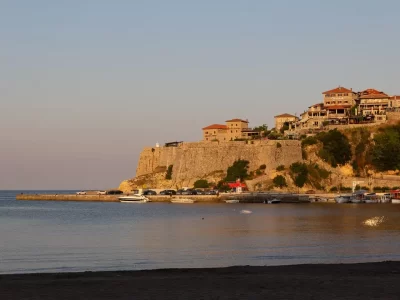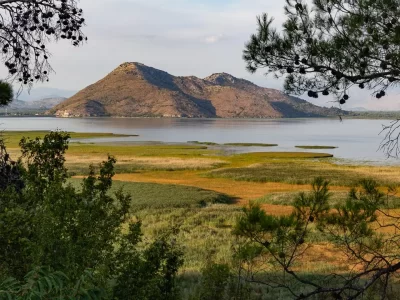The Old Town of Bar (Stari Grad Bar) is blessed with a privileged location: up on a hill, close to the Adriatic Sea, and guarded by the imposing Mount Rumija. It’s easy to figure out why so many rulers battled over its control.
From this cliff, located only four kilometres (2.5 miles) away from the shore, whoever was the boss of this powerful city would govern the affairs of whoever was in the vicinity.
The first settlements (Illyrians, Greeks, and Romans) date back to the 6th century B.C.
Much later, in the Middle Age, the Byzantines, the Slavs and the Venetians fought for a piece of the pie, until the Turks said: This pie now belongs to the Ottoman Empire!
But only until the end of the 19th century, when Montenegrins said: No, the pie is ours.
They all left their mark in the form of churches, mosques, palaces, squares, and even an aqueduct. After more than two thousand years of war, peace finally arrived.
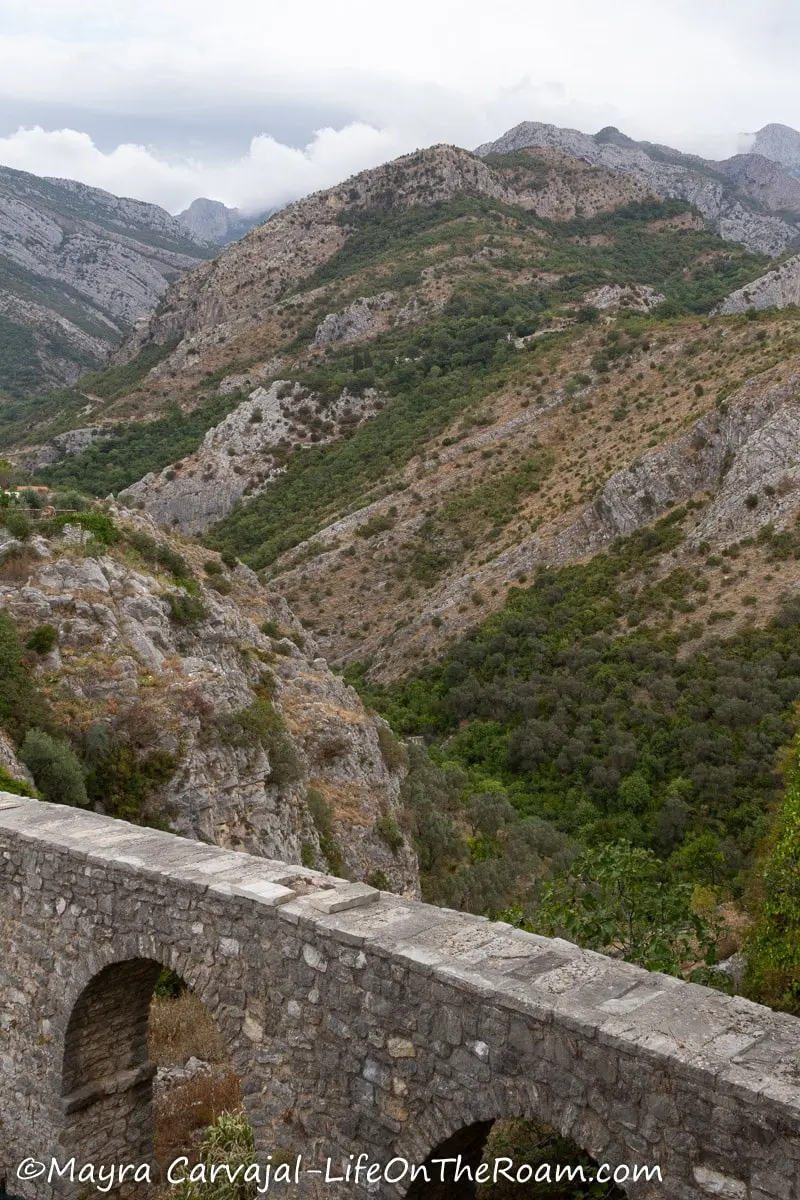
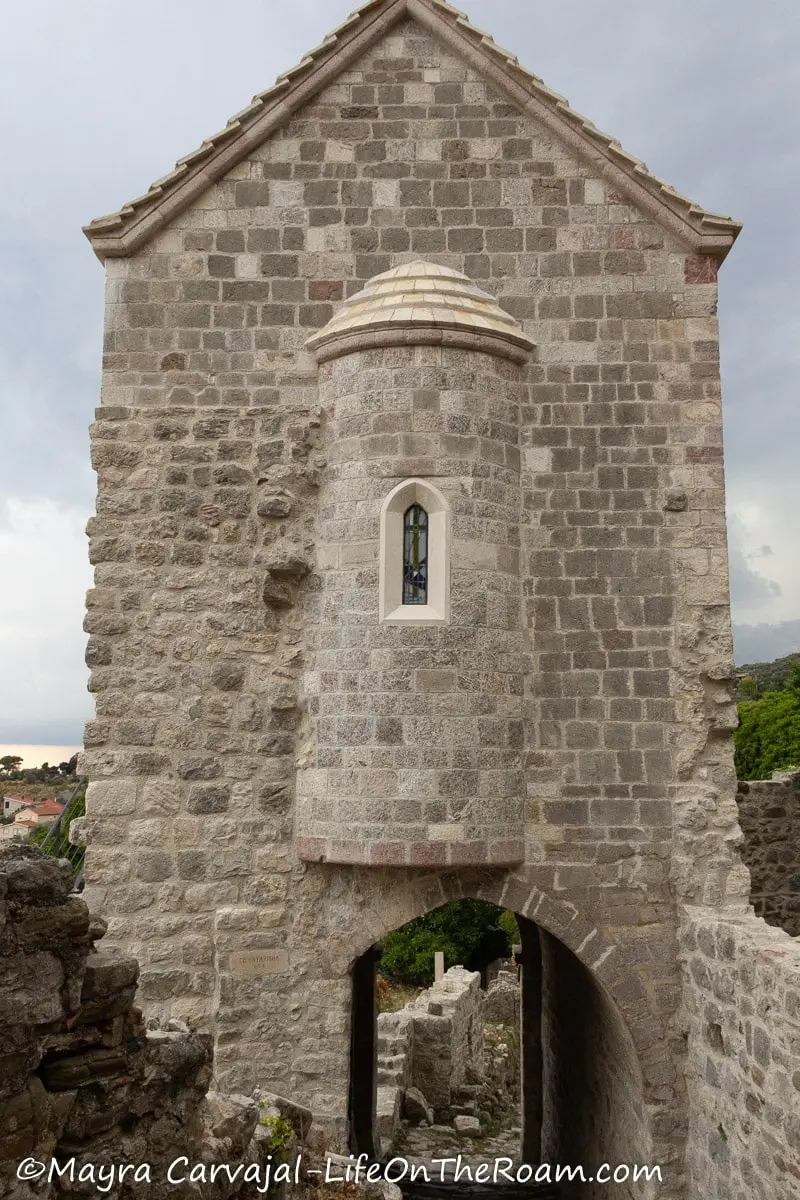
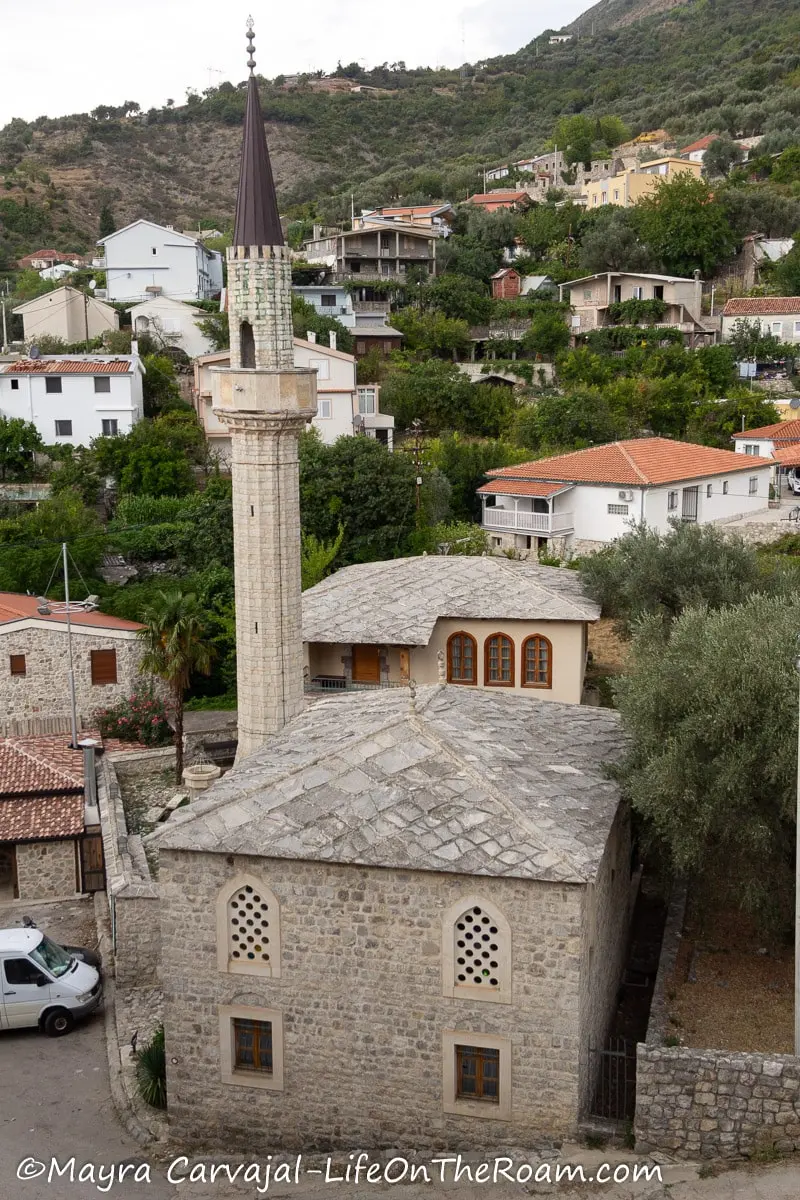
However, the last battle left its scars and the pie looked more like a cobbler, people couldn’t live there anymore. Then, in 1979, a strong earthquake caused severe damages turning the cobbler into crumbles. But fortunately, artifacts were recovered, some buildings were rebuilt, and restoration efforts are ongoing so we can learn about the history of this important centre.
The Old Town of Bar (Stari Grad Bar) is on the UNESCO World Heritage Site Tentative List as it’s a significant medieval archaeological site in the Balkans.
Disclosure: This post contains some affiliate links. If you make a purchase through those links I will earn a commission at no additional cost to you (zero, nada). To check the full disclaimer, click here.
Table of Contents
Visiting Stari Bar
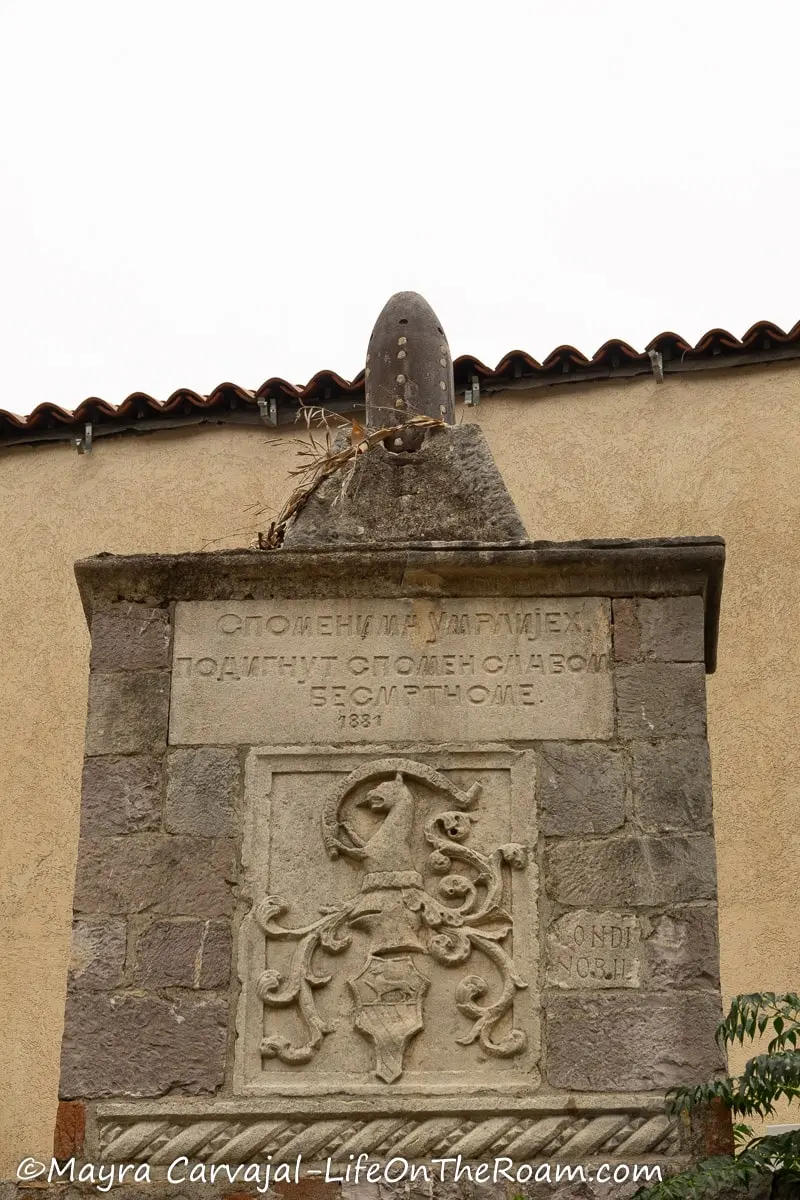
Step on the cobblestone street at the foot of the hill to make your official entry to Old Town Bar, walking past relics displayed on blocks made out of cut stone, as in an open-air museum.
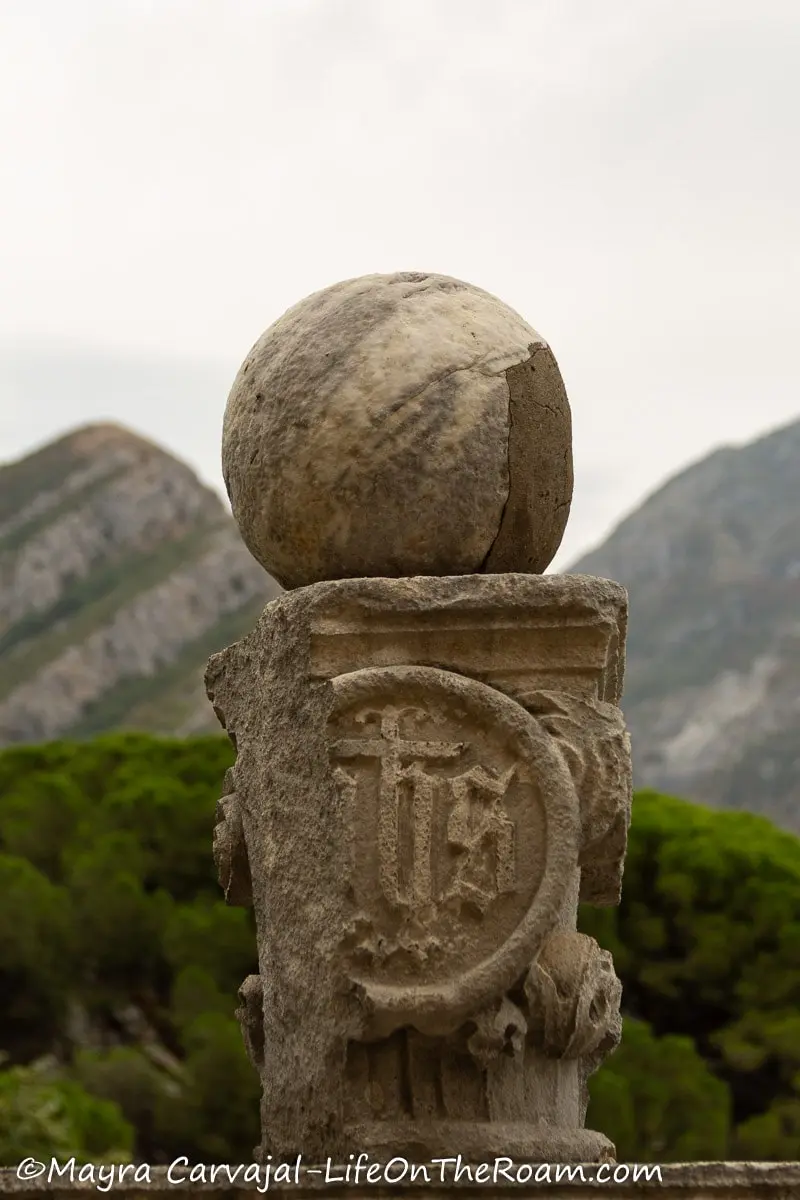
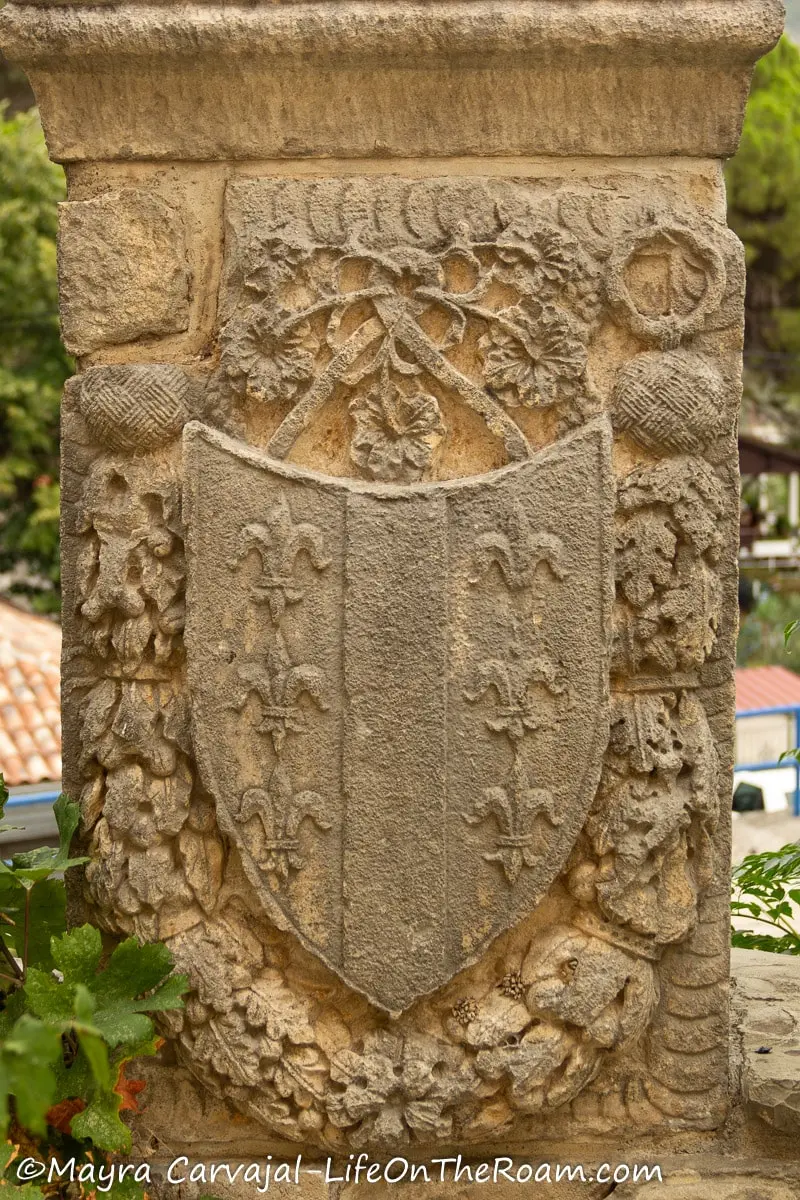
You’ll see in the distance the iconic clock tower, a few stone buildings emerging in between the trees and remnants of the walls that once enclosed a fortress. All against the scenic backdrop of Mount Rumija.
Going uphill on the pedestrian street you’ll find several cafes and restaurants with lovely outdoor terraces and little shops inside cute houses that sell all kinds of souvenirs.
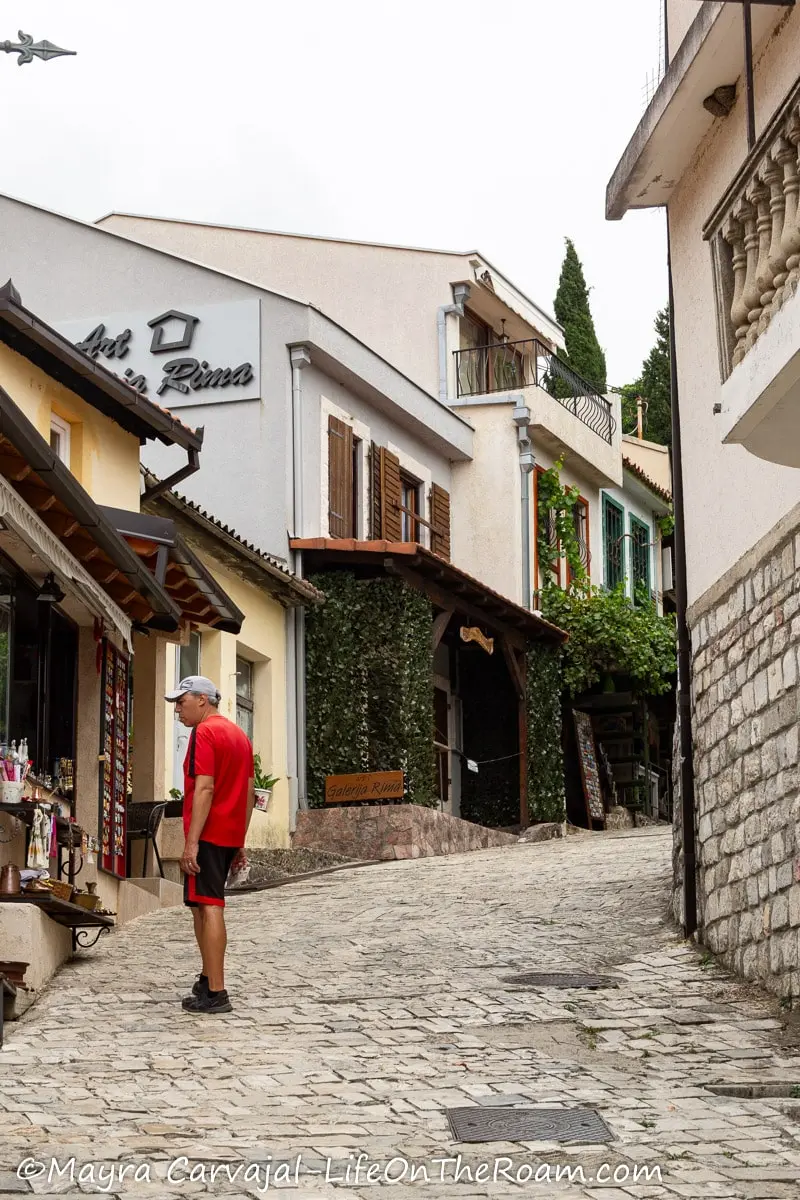
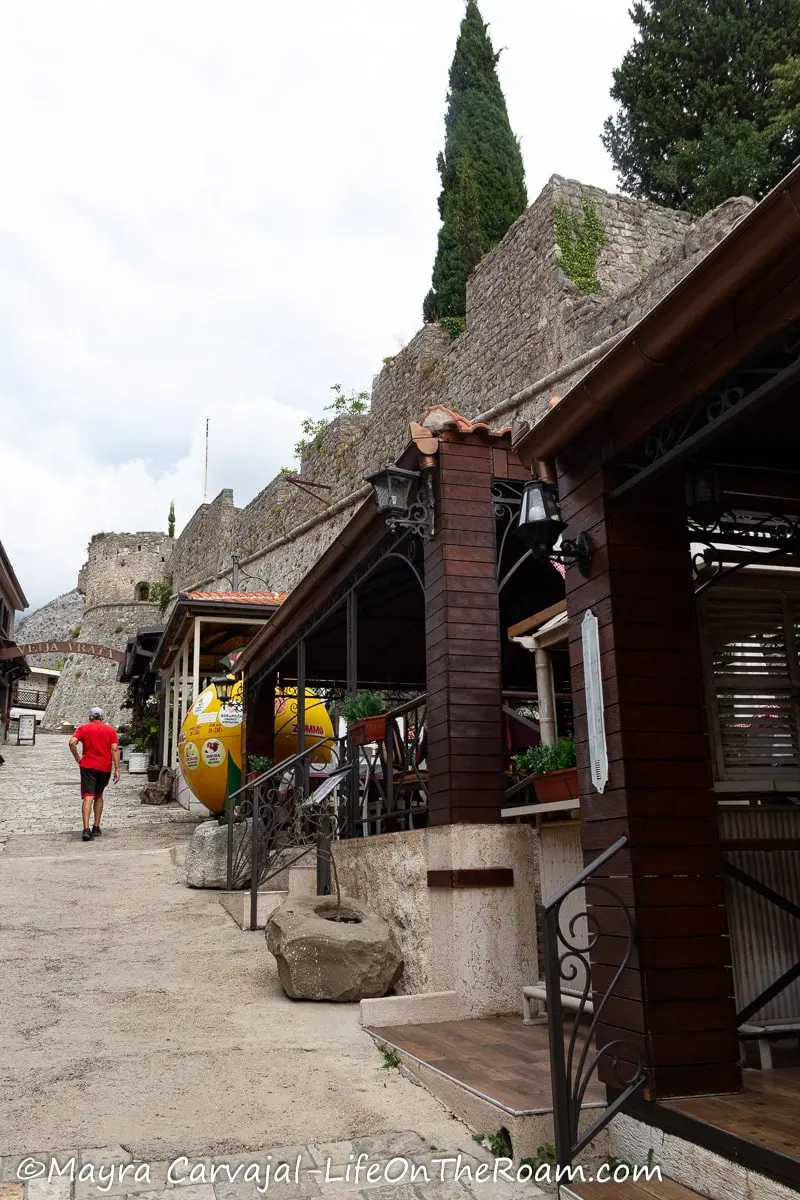
In addition to the usual trinkets, they sell local honey, homemade marmalades, wine, and everything under the sun related to the most famous product in Bar: olive oil. Not only the oil, but also olive oil soaps, creams, and handmade decorated bottles to pour the green tasty liquid.
Keep walking and you’ll find the extra cheese on the pizza: the Old Fortress.
The Old Fortress of Stari Bar
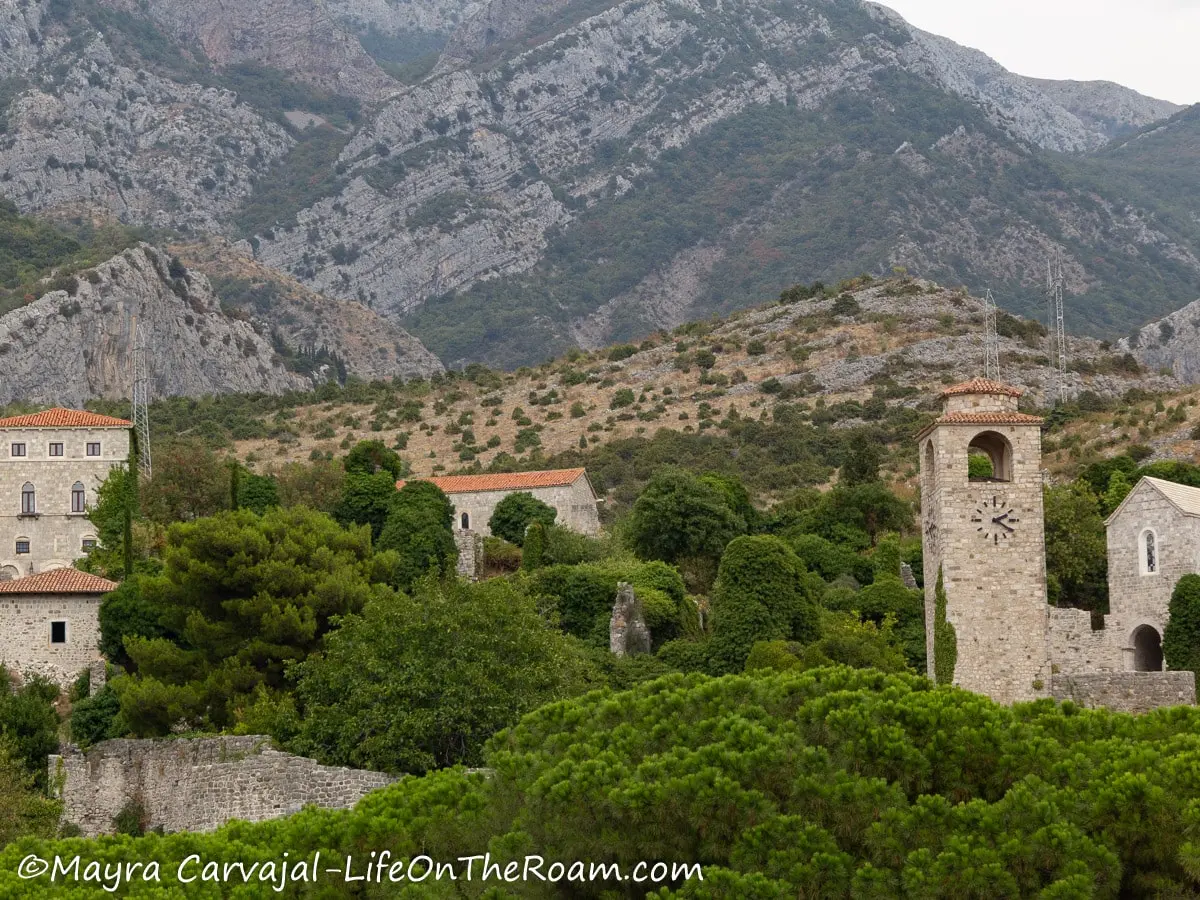
A big arched, studded double door guards the main entrance to the fortress of Stari Bar, with the Lion of Saint Mark -symbol of the Republic of Venice- watching from above.
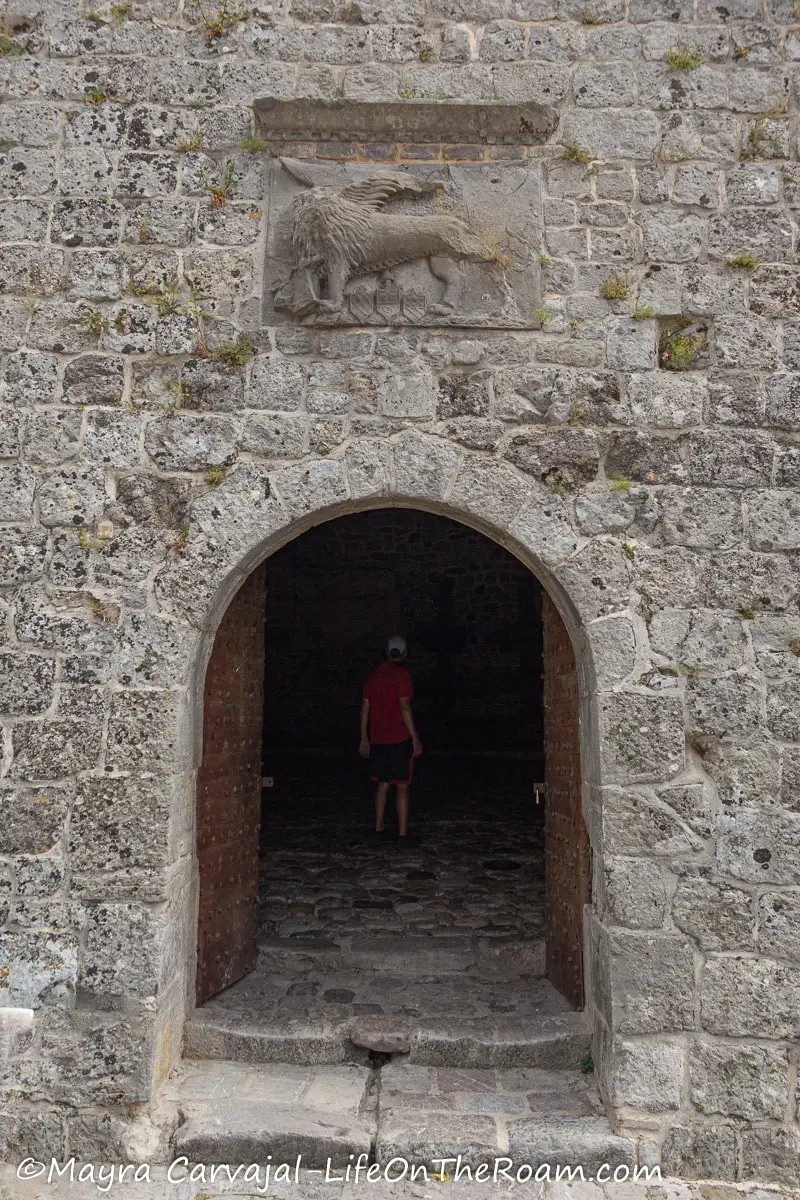
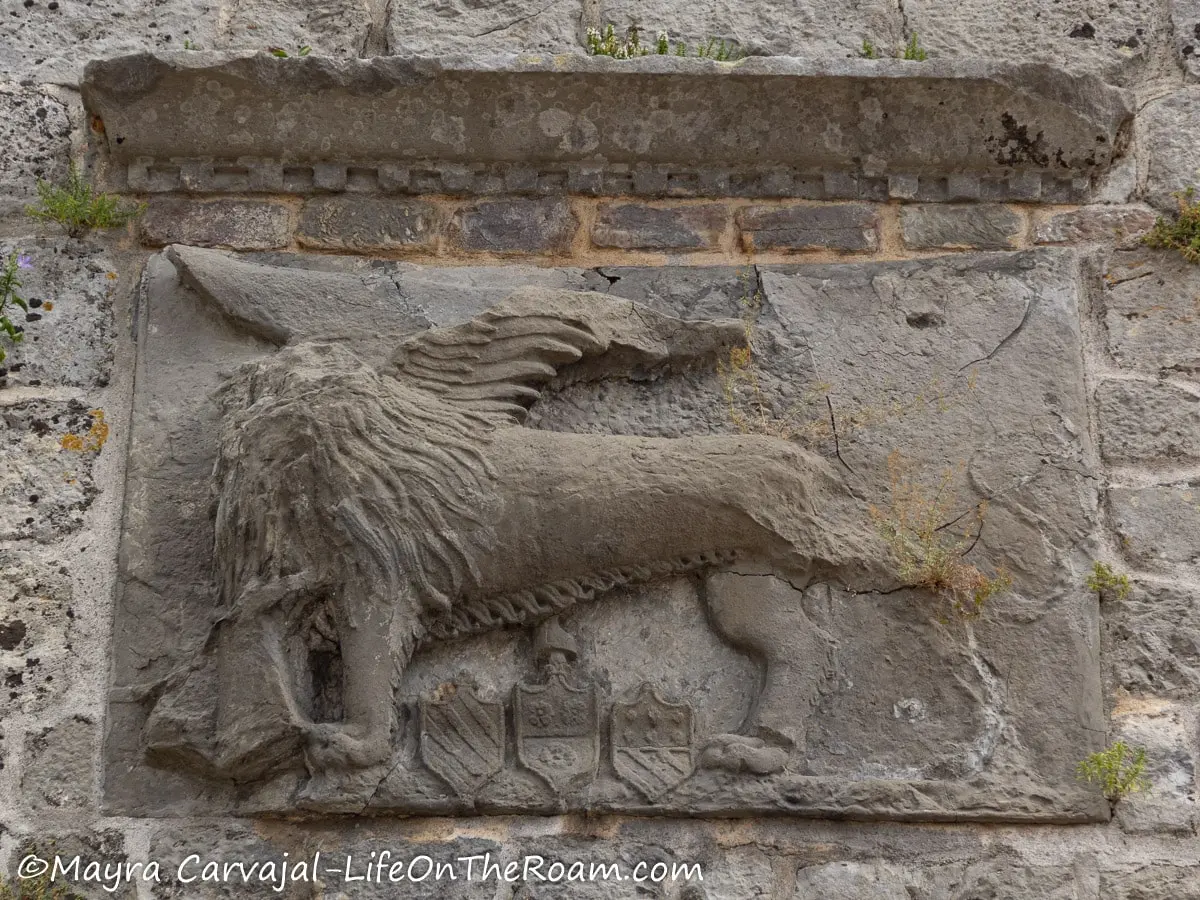
The fortress was built between the 10th and the 18th century, with impressive bastion towers like the one you can see on the corner, to the left of the entrance gate that was installed in the 16th century.
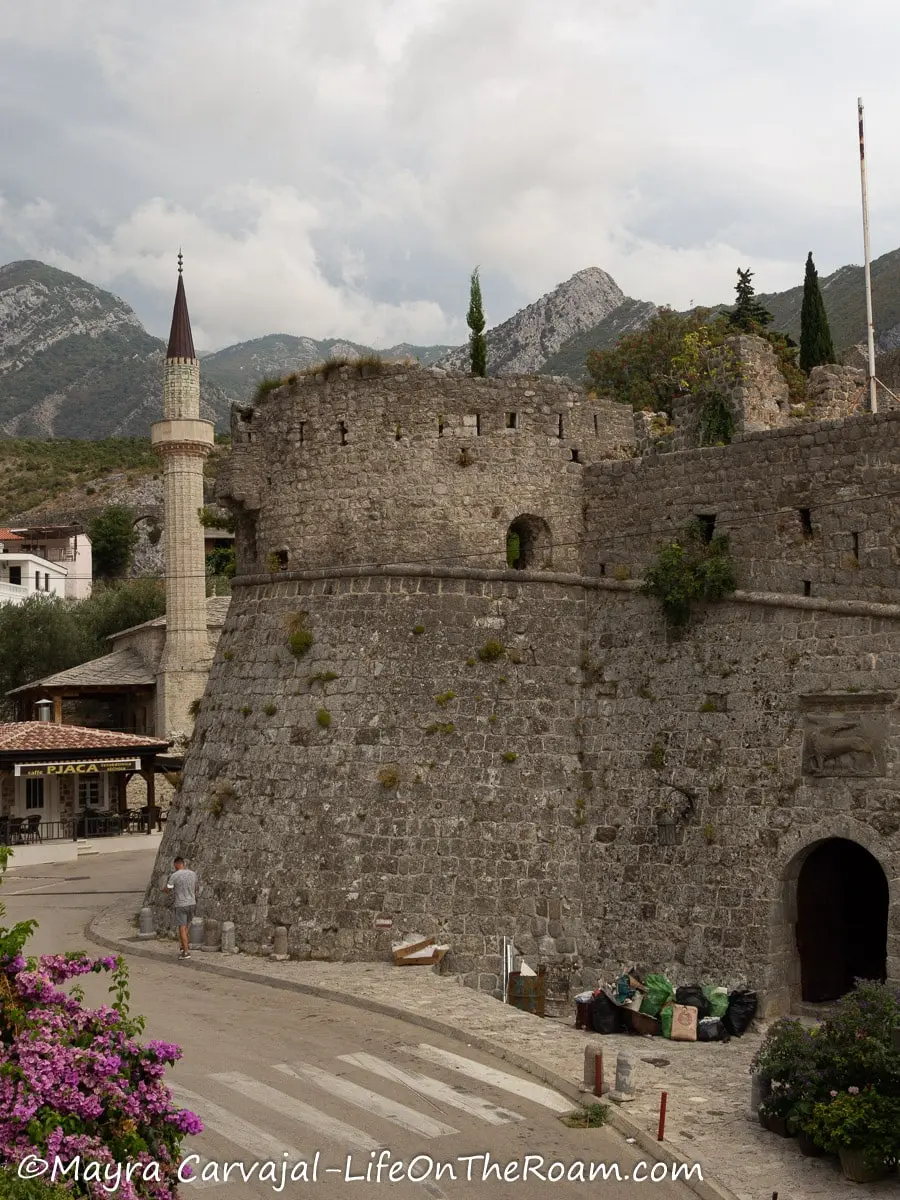
Behind the walls, you’ll roam around the ruins of a fortified city that is being slowly reconstructed as an open-air museum, with ongoing restoration works and a few finished buildings.
As walkways and stairs are made of cobblestone and shrubs and trees partially engulf some structures, I felt like I was enjoying a hike in a remote historic area in the mountains (bring shoes suitable for uneven terrain). Even if you’re not into history you’ll be more than pleased with the views.

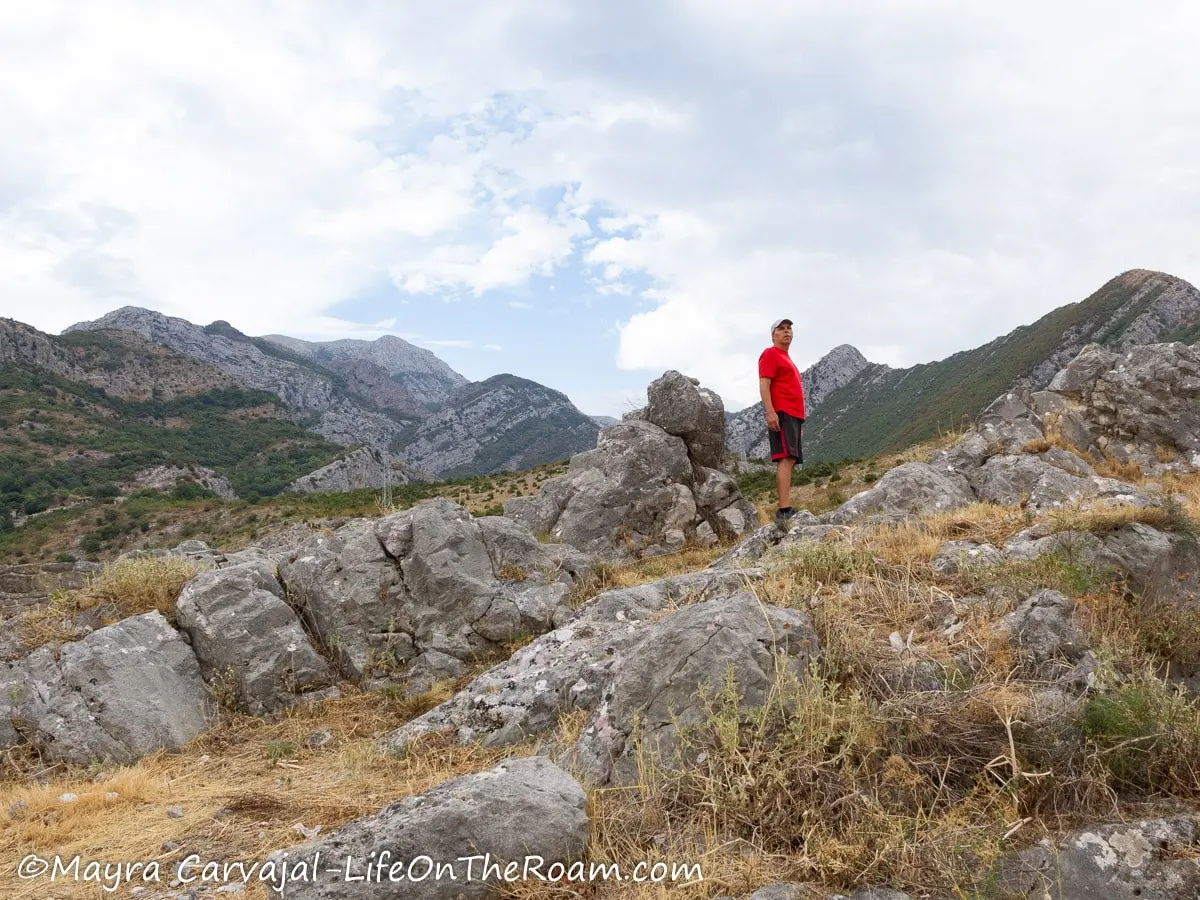
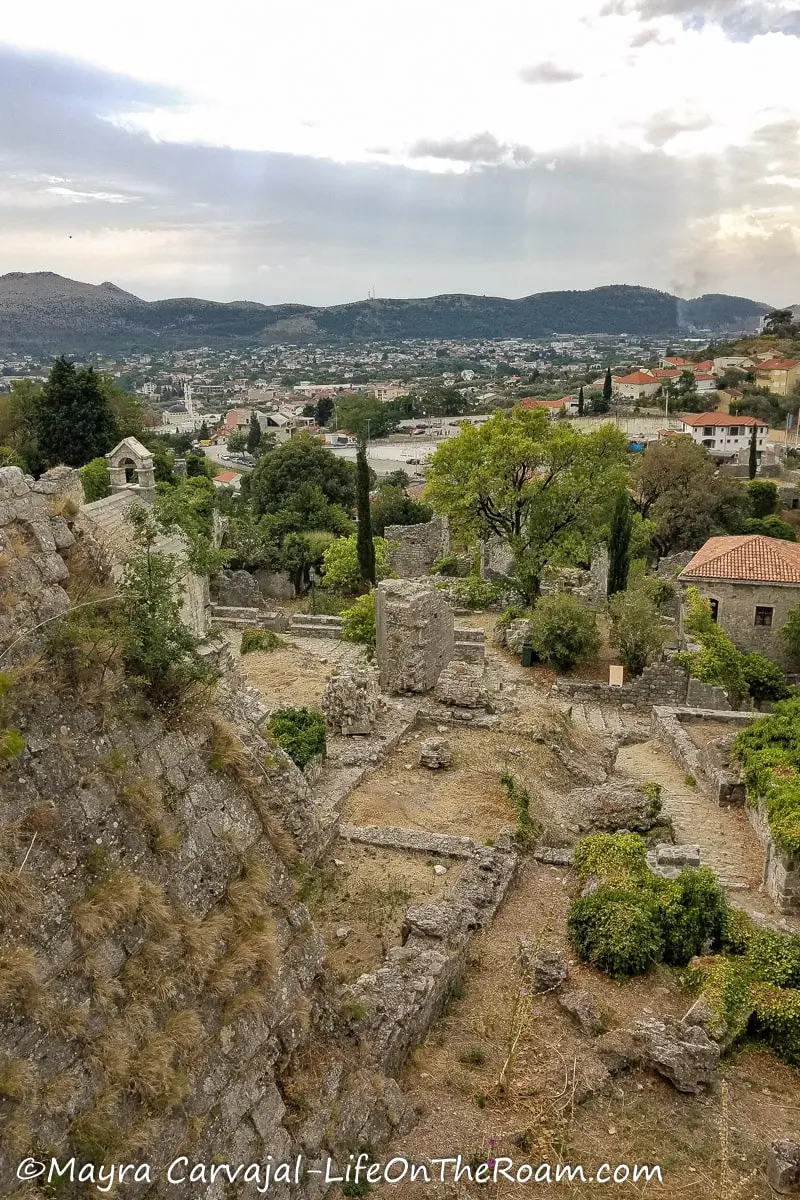
I spent a little bit more than two hours exploring the alleyways, and checking out the views and the architecture.
There are more than a dozen marked points of interest along the route, with signs indicating what it is and the construction period. I’ll list here the ones I found more interesting:
Exhibit Area
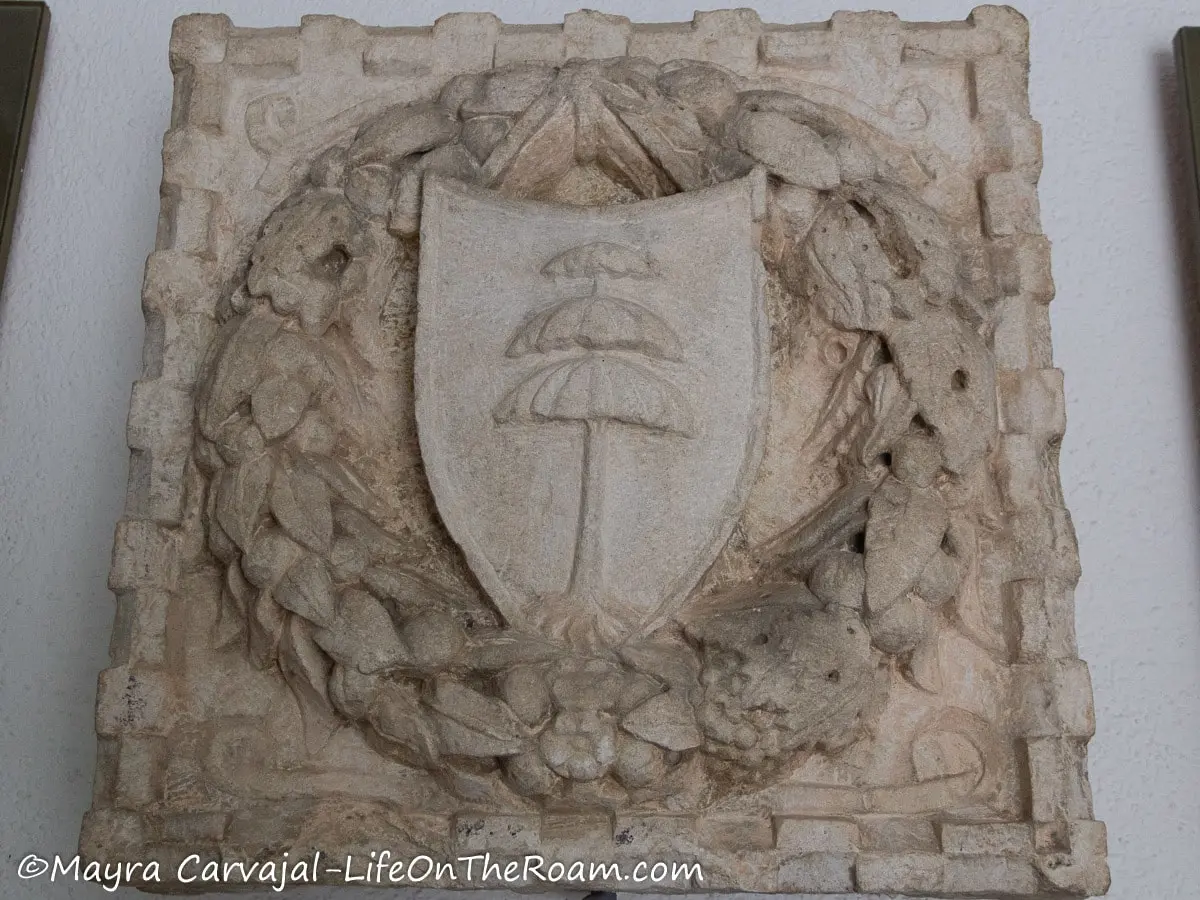
After you enter the fortress you’ll walk into a rudimentary exhibit area that provides some information about the site. You’ll see pictures of the historic buildings with data such as the year of construction, past, present, and future usage, and other details that were very helpful to write this post. Their location is indicated on a big map on the wall.
There are display cases with fragments of colourful pottery from the 15th and16th century and pieces of architectural details that once adorned the city.
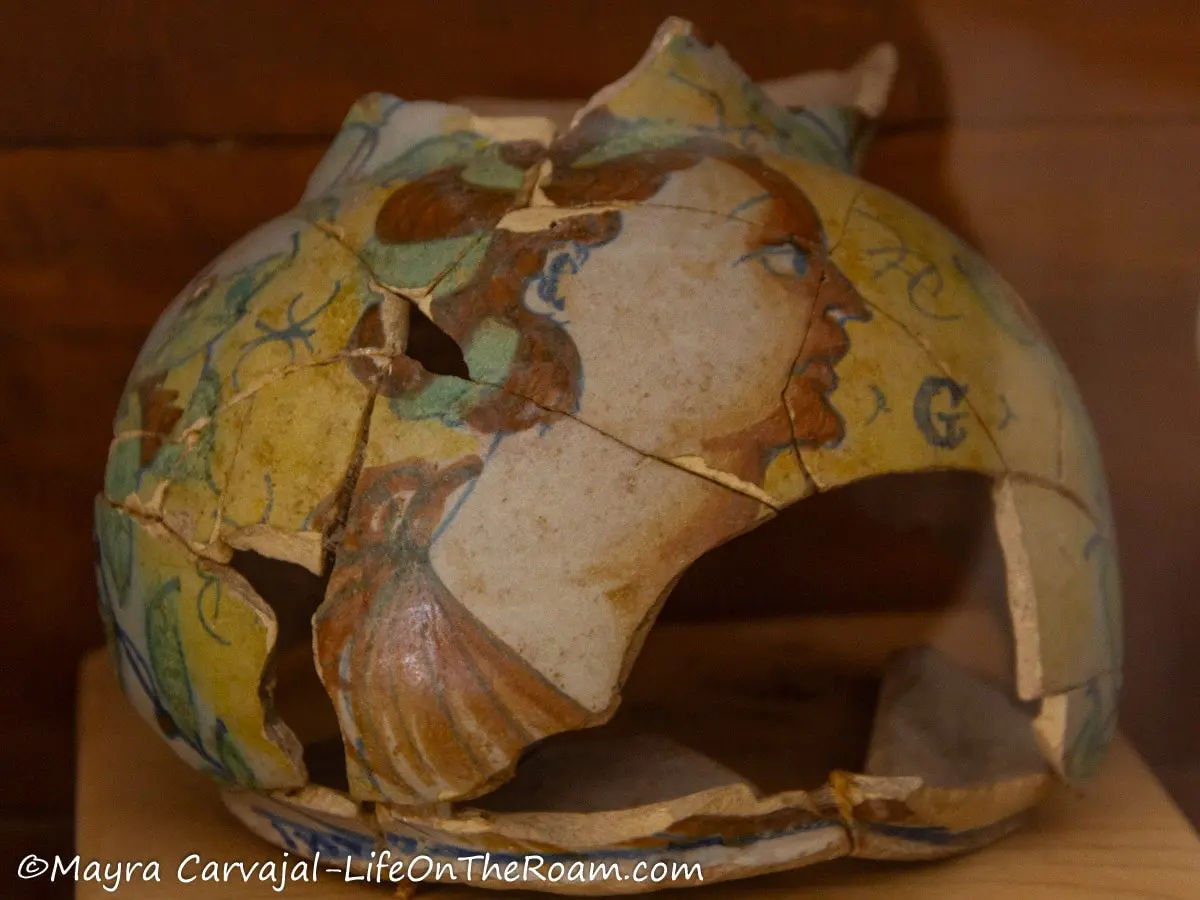

In the nearby outdoor area you’ll see other interesting artifacts and structures.
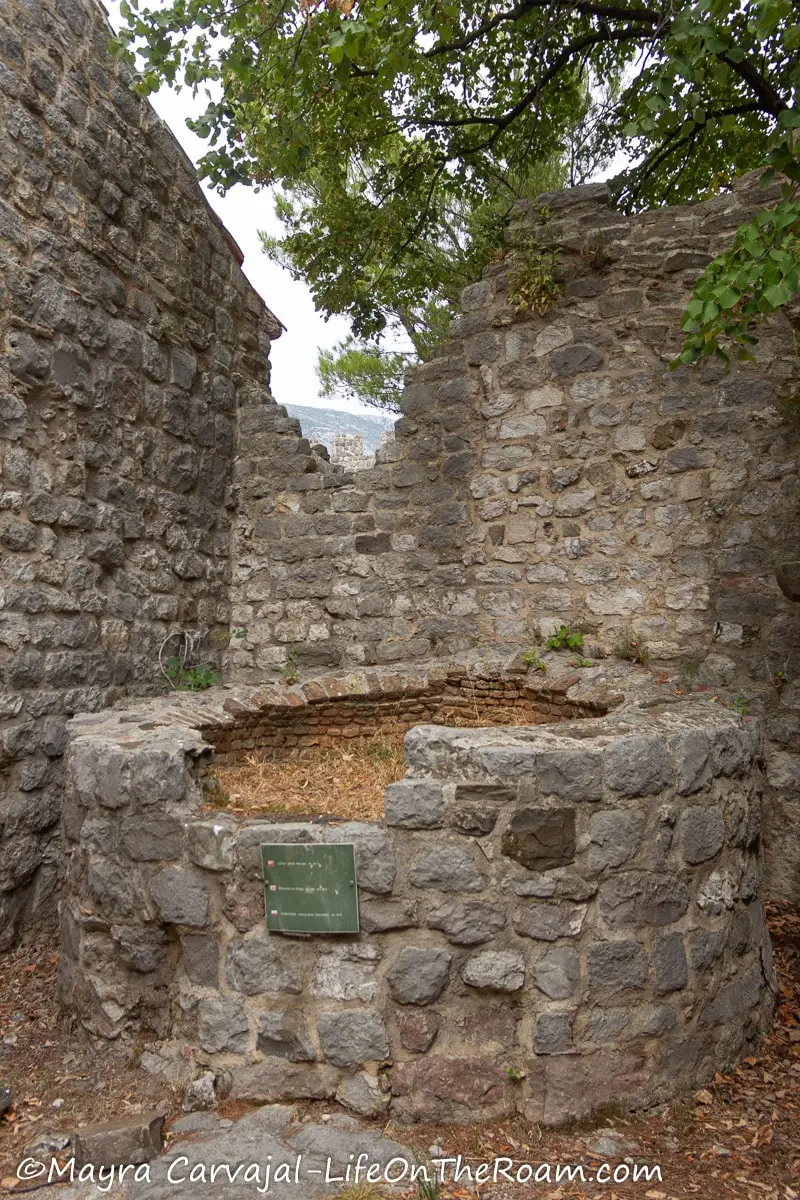
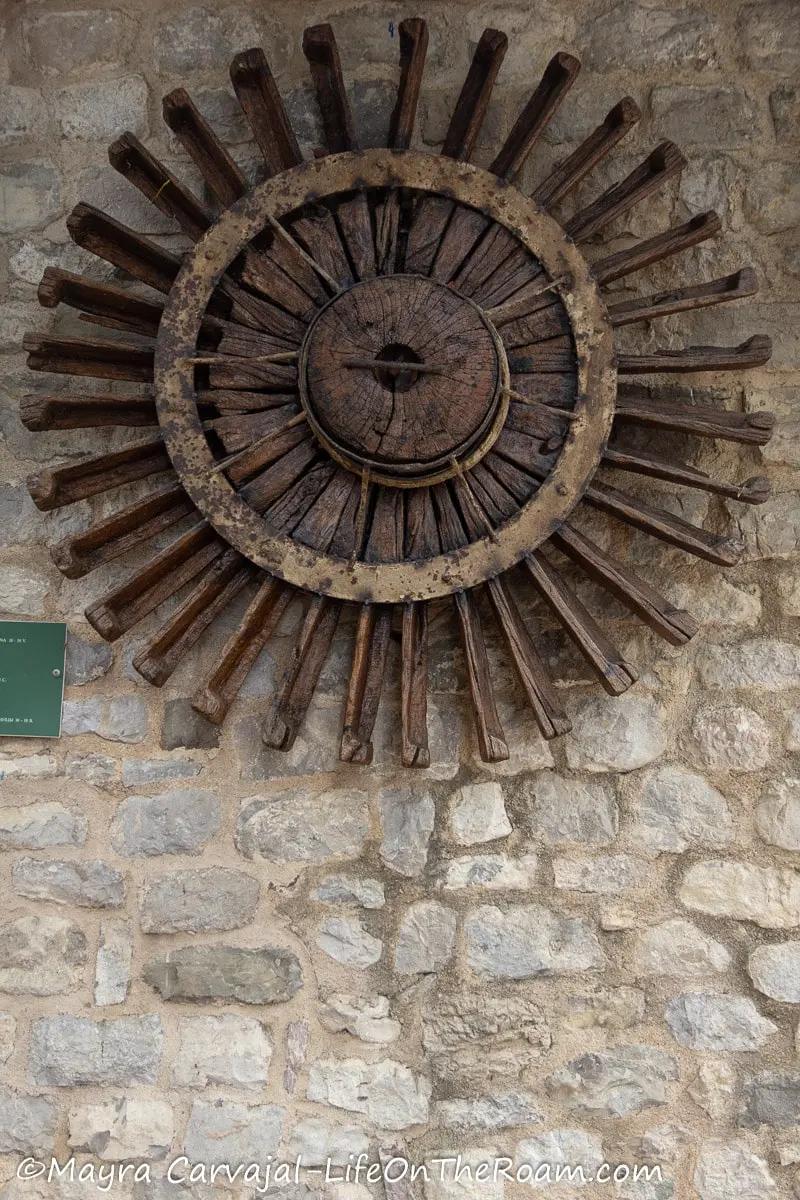
The Customs House
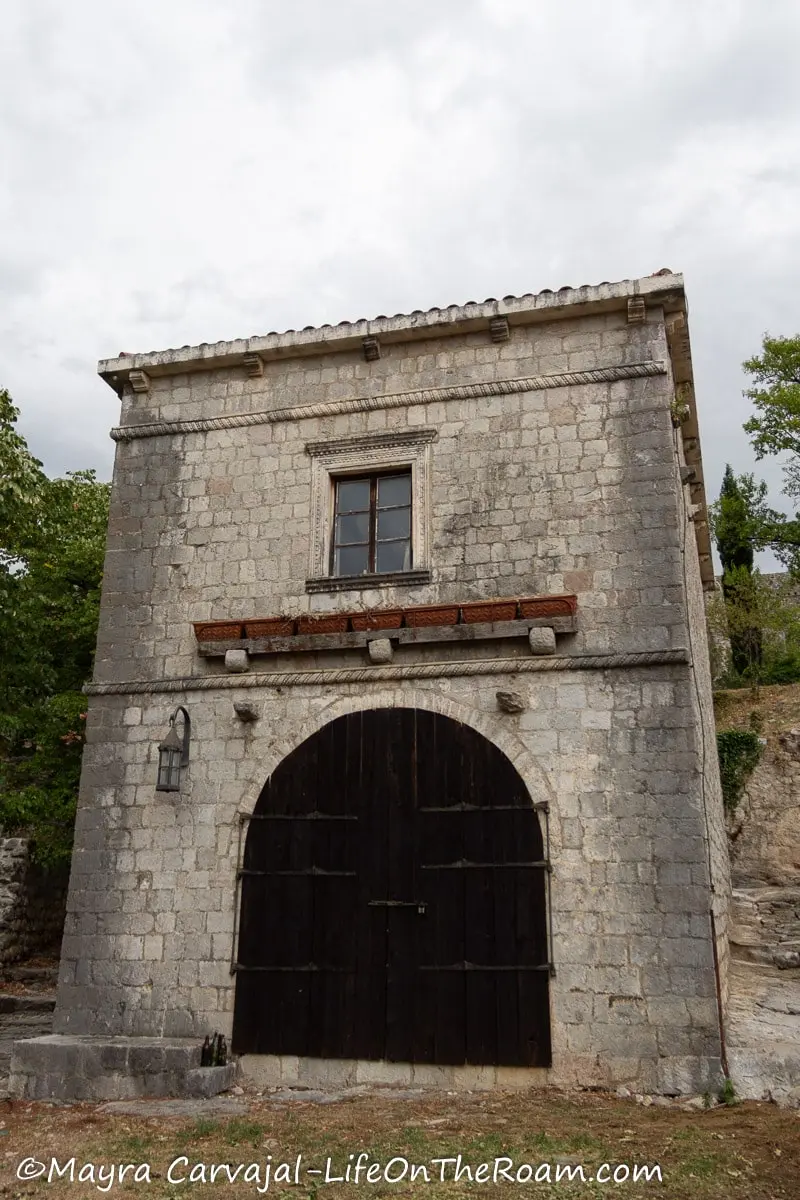
The Customs House was built between the late 15th/early 16th century and has served different purposes. Today, it functions as an exhibit space.
The Church of St. Nikola
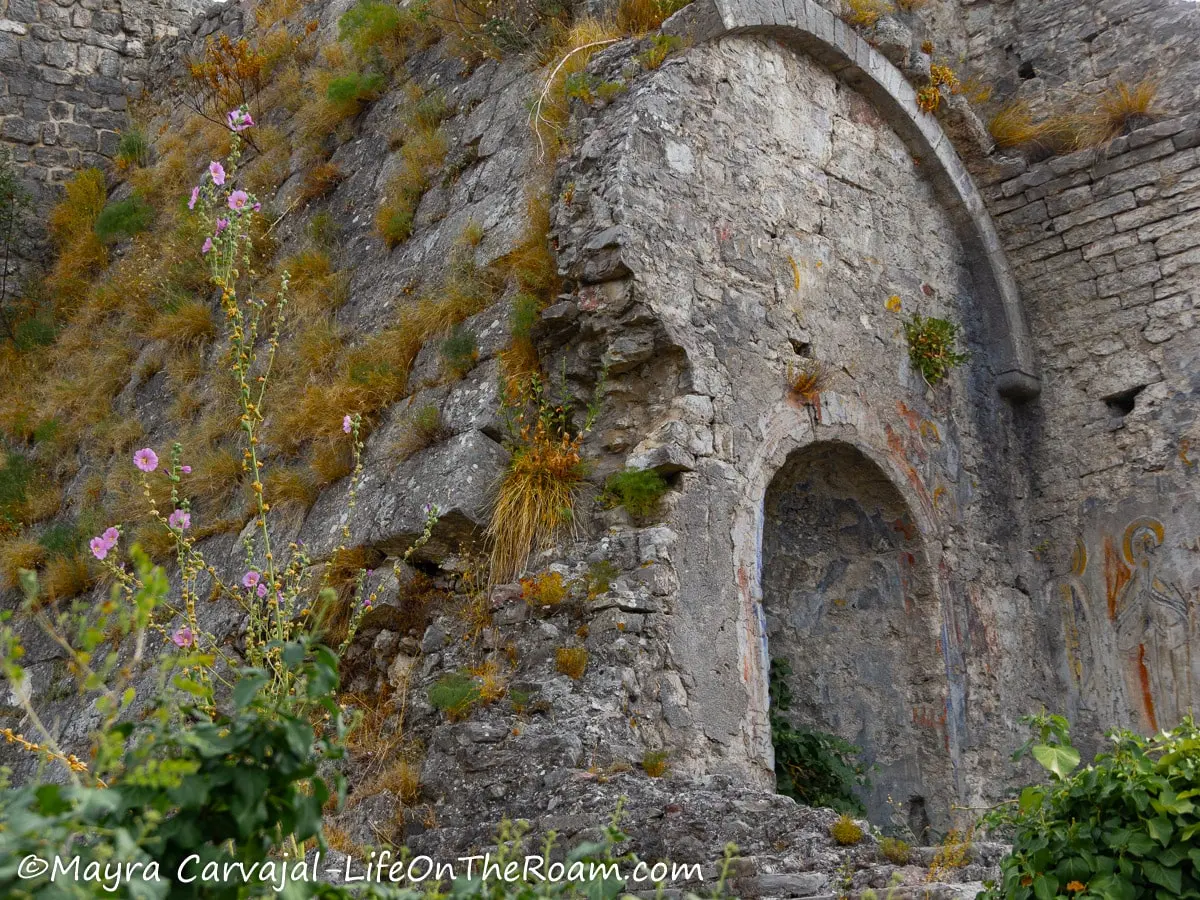
In the late 13th century the Serbs built a Franciscan Monastery and the adjacent church of St. Nikola. 300 years later it became a mosque that succumbed to an ammunition explosion in 1912.
If you look closely you can see traces of mural paintings on the walls.
At the Lapidarium you’ll find some pieces of the church interior, such as inscriptions carved in stone from the early 14th century.
The Lapidarium

When you enter the Lapidarium, built in the 18th century, you can see fragments of architectural elements such as Gothic and Renaissance-style columns, capitals and window frames from around the site. Some pieces date back to the 13th century.
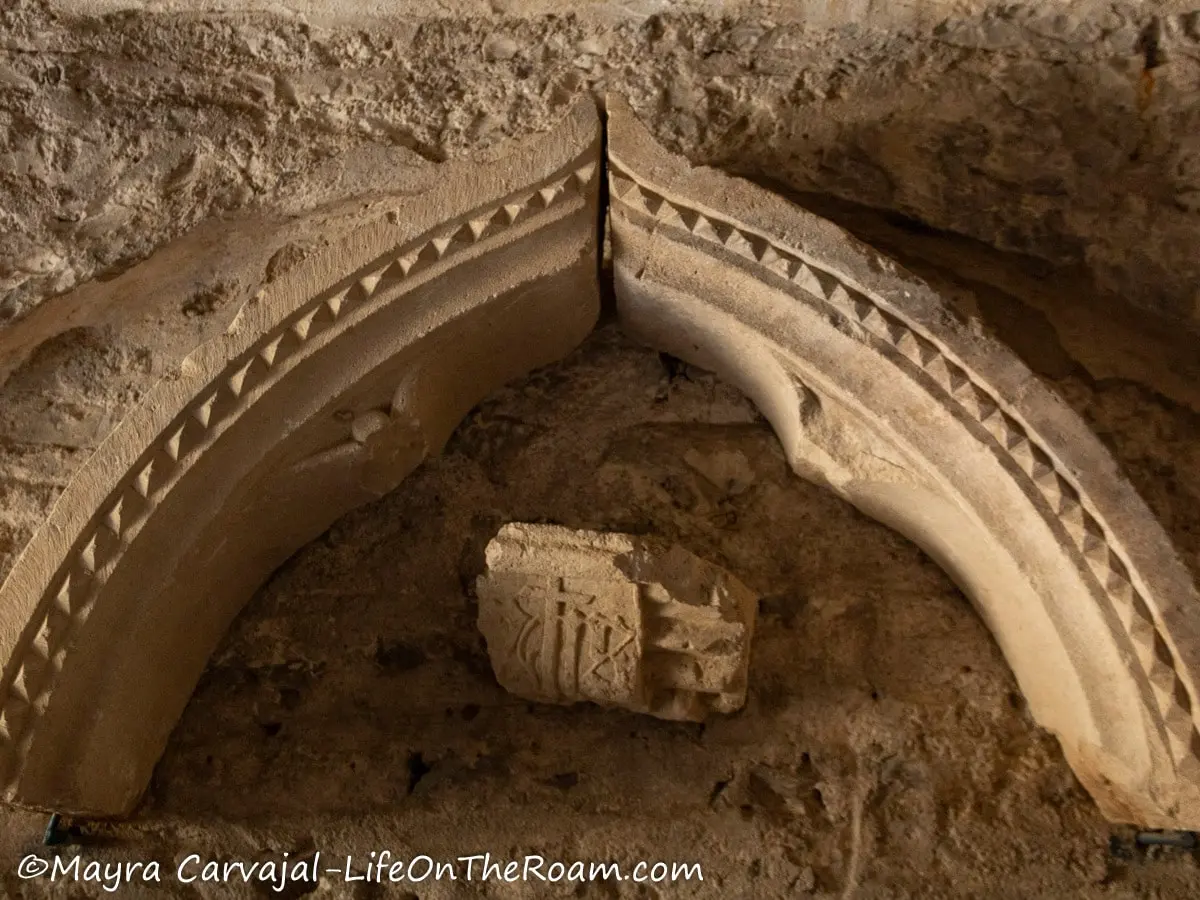
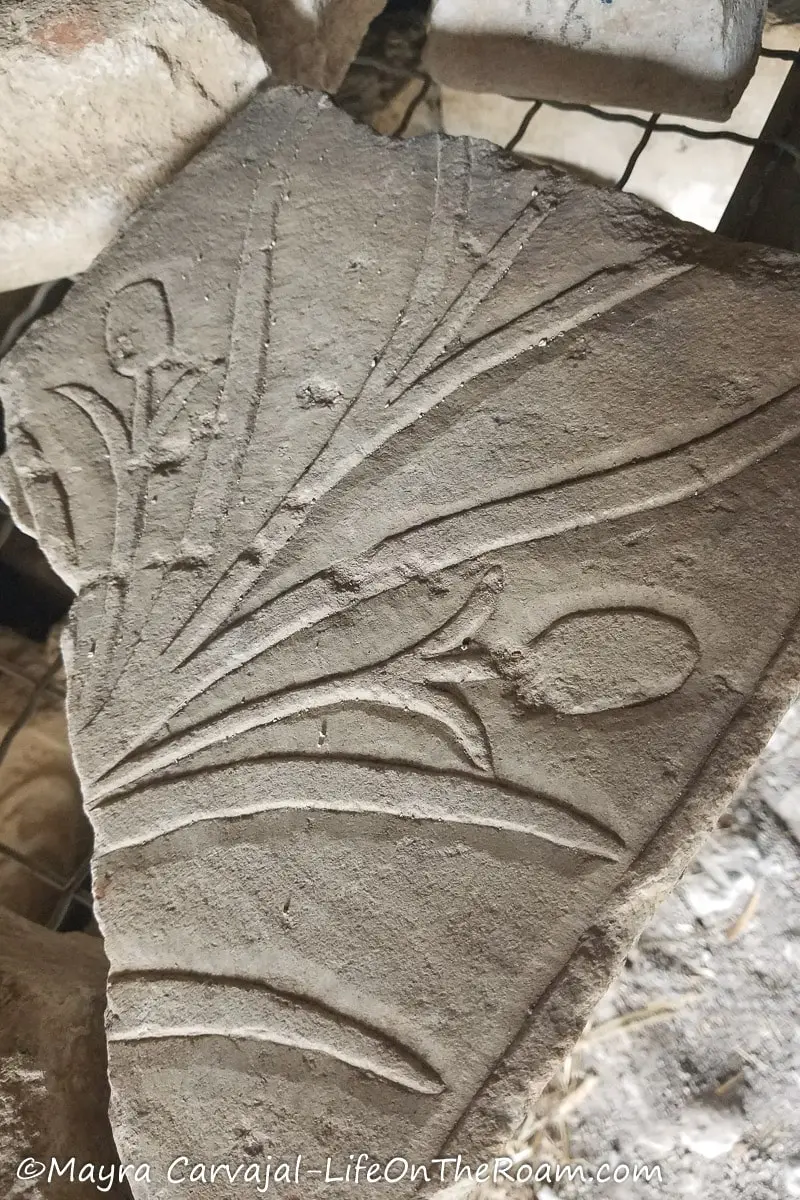
The Citadel

Not only is the scale of the citadel quite impressive, but it’s also a spectacular viewpoint. Its construction spanned several hundred years, from the 10th to the 19th century.
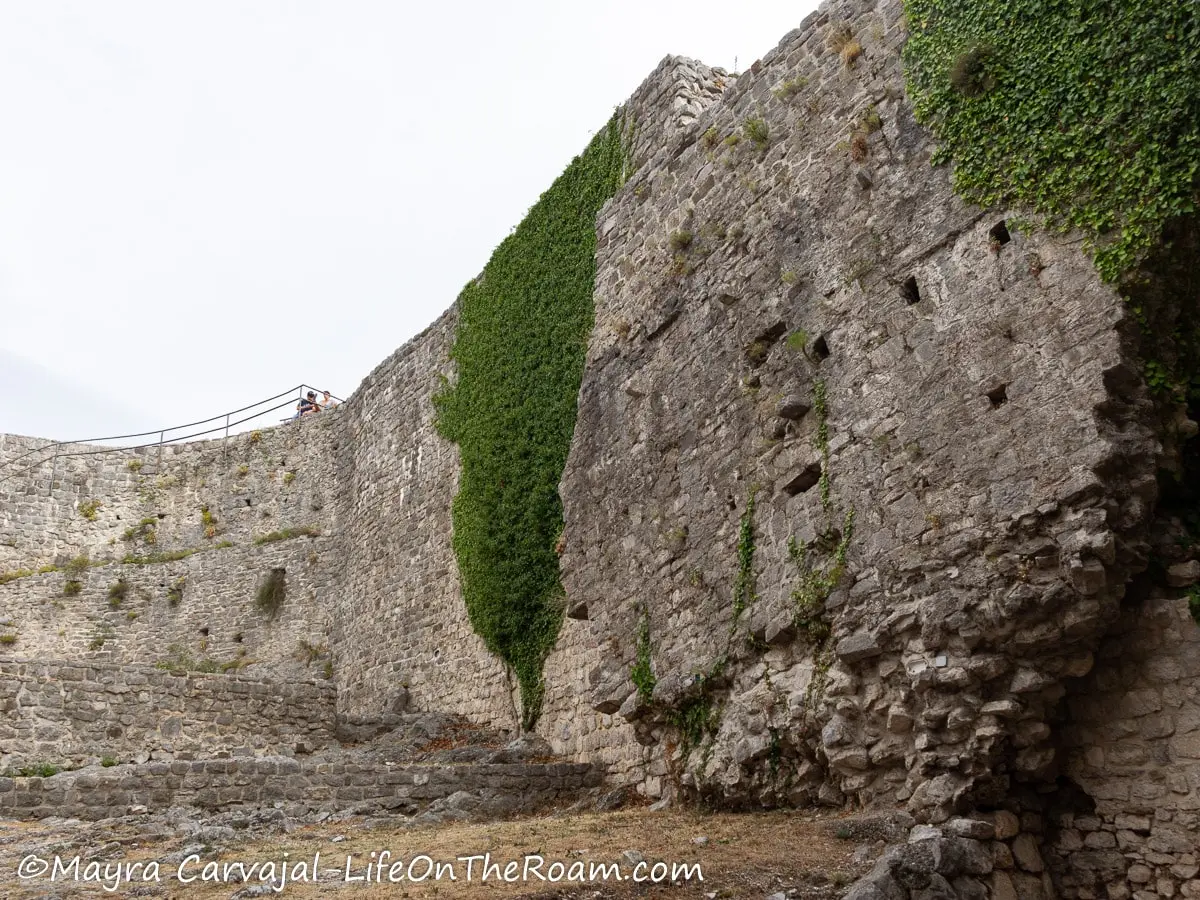
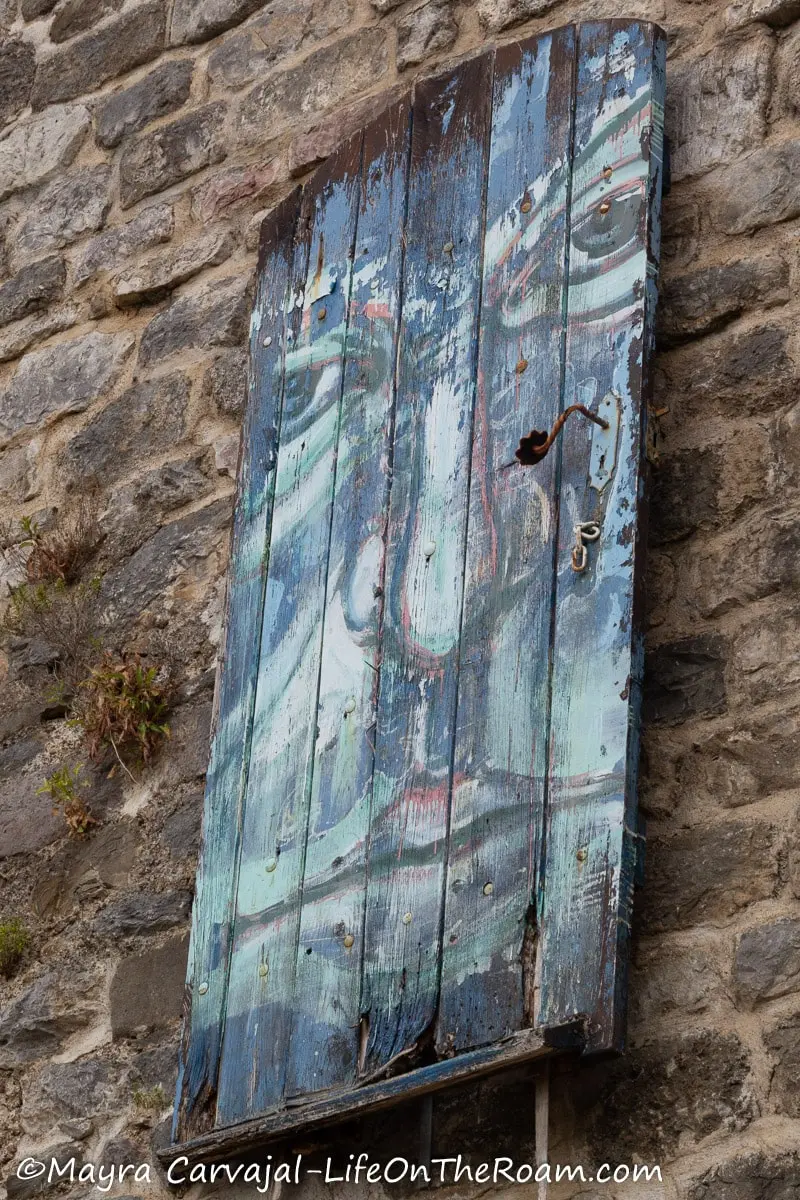
Go to the top and walk on the ramparts, where you’ll encounter an impressive bulwark in semicircular shape, with multiple gun ports and arrow slits, and a panoramic view of the fortress’ ruins.

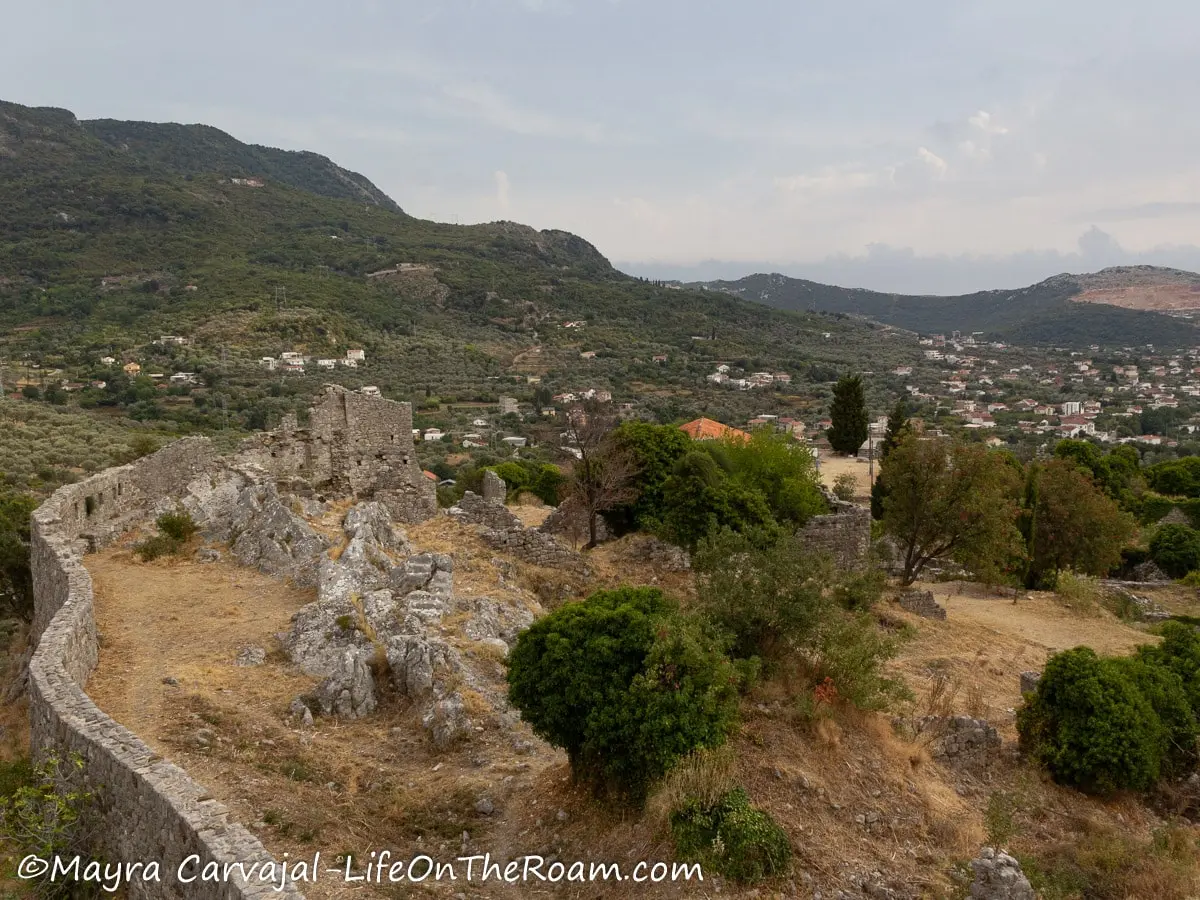
The View of Mount Rumija and the Adriatic Sea
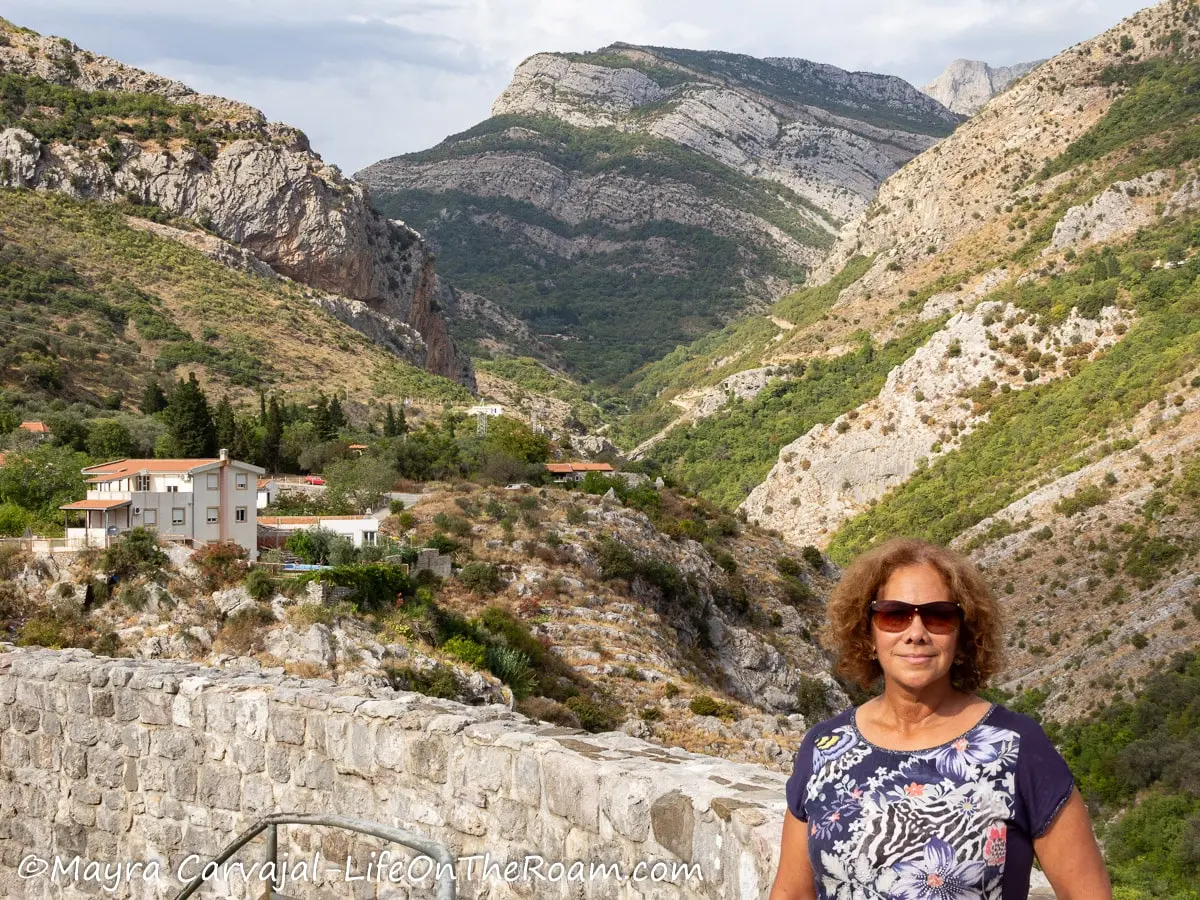
From the ramparts you can also enjoy fabulous views of Mount Rumija, which I like to call “The Striped Toblerone Mountains”. As I said before, walking around the fortress feels like a hiking mini-trip.
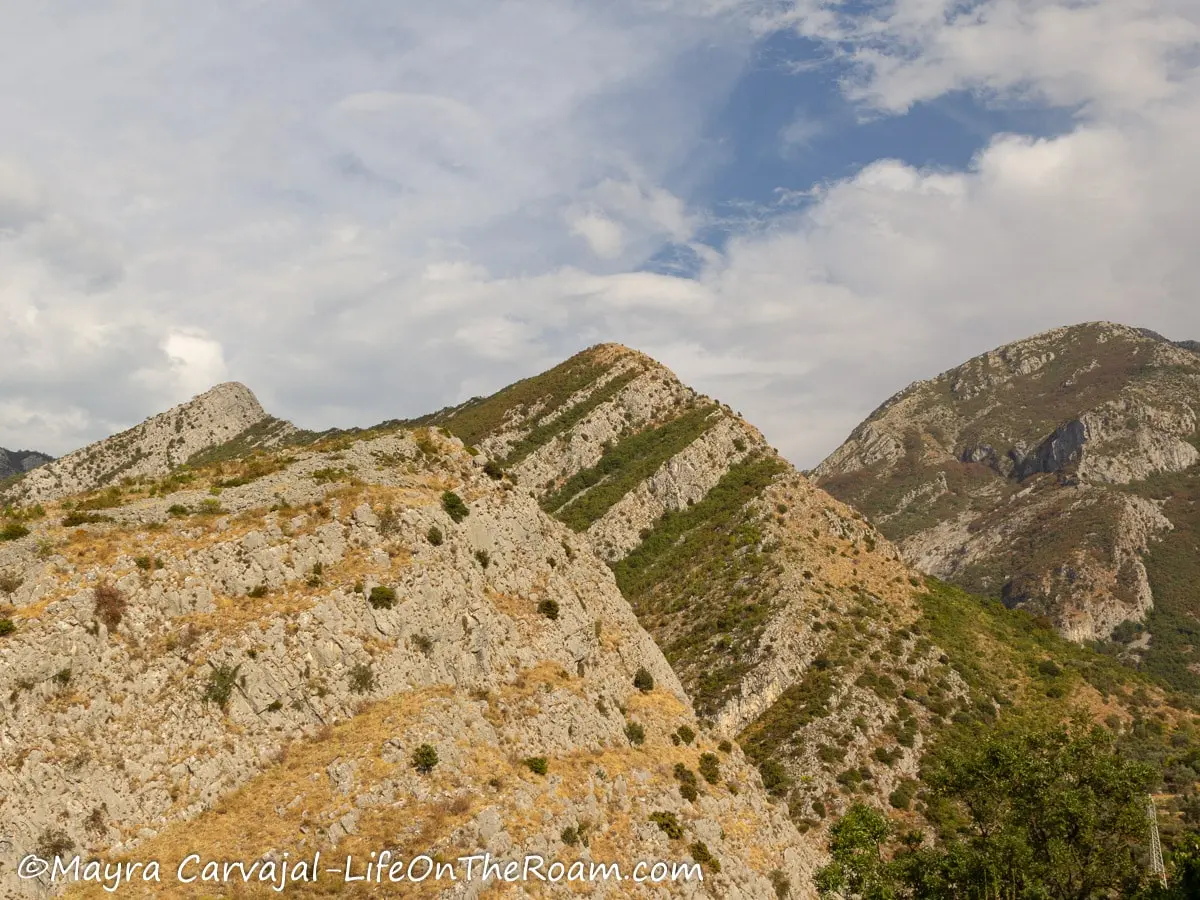
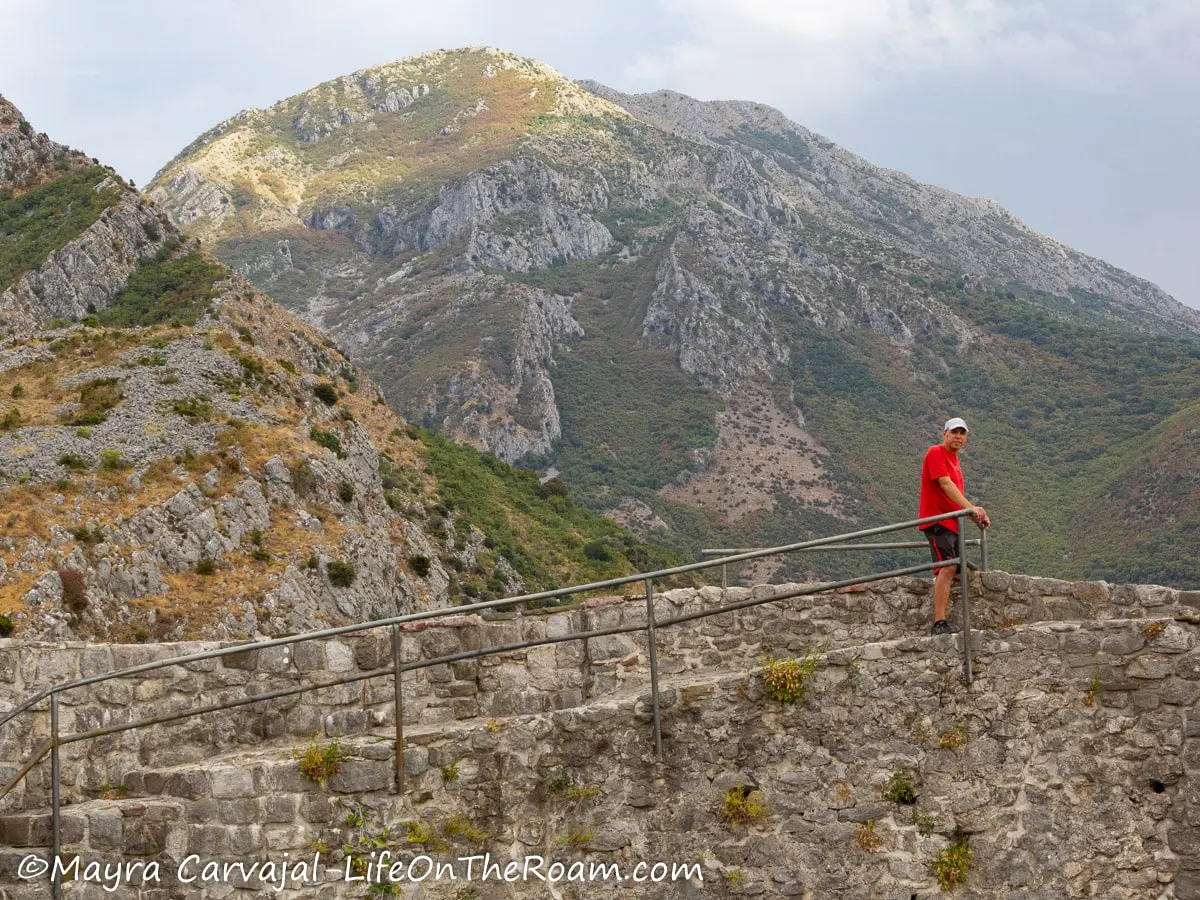
You’ll also spot an aqueduct, a sea of olive trees, and the Adriatic Sea in the distance.
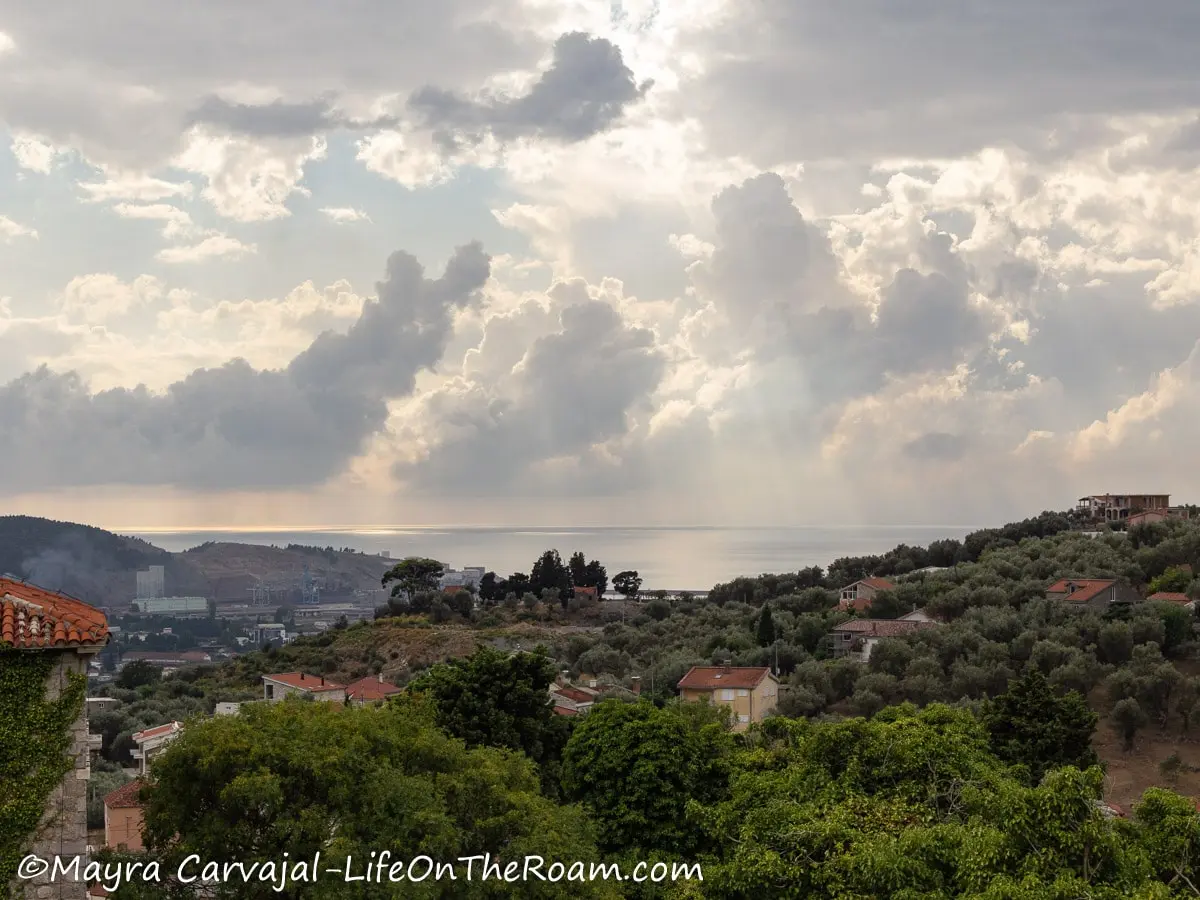
The Aqueduct
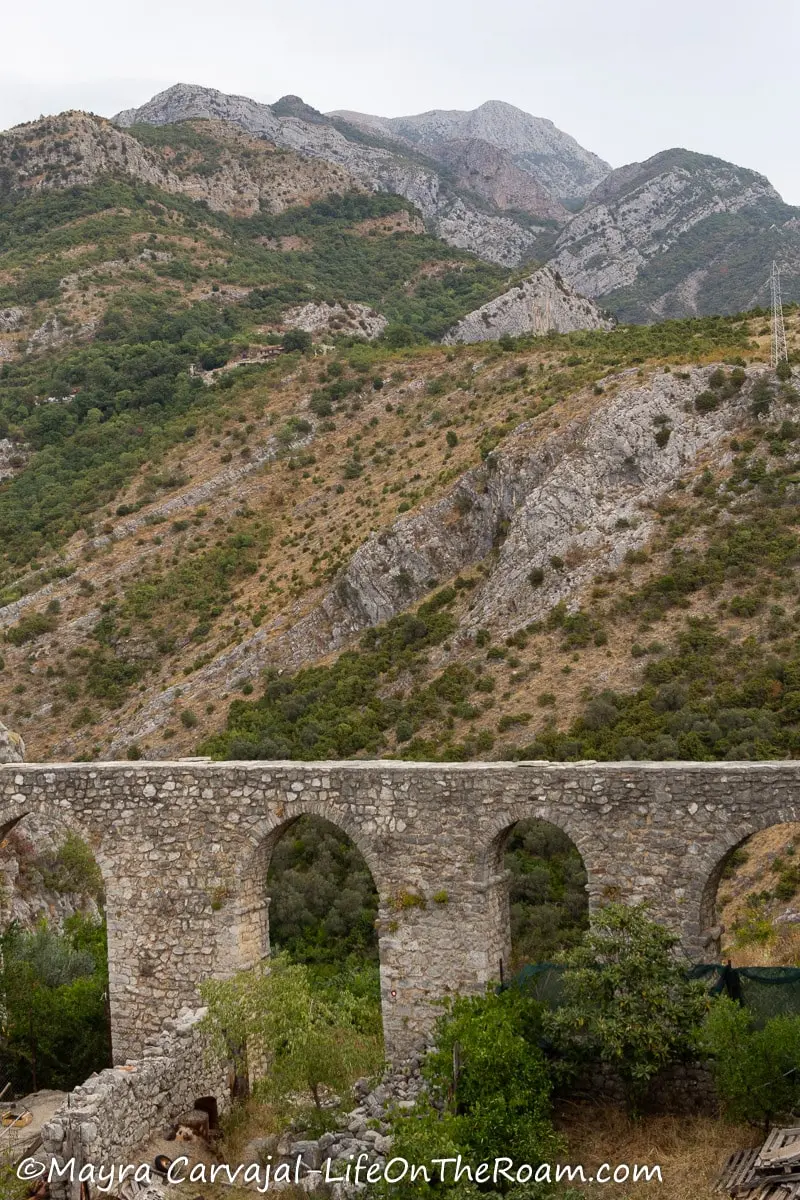
From the rampart of the fortress you’ll catch a good view of the aqueduct built by the Turks in the 17th century. It supplied Stari Bar with spring water from Mount Rumija.
You’ll see a few of the 17 arches, which were restored after the earthquake.
St. John’s Church
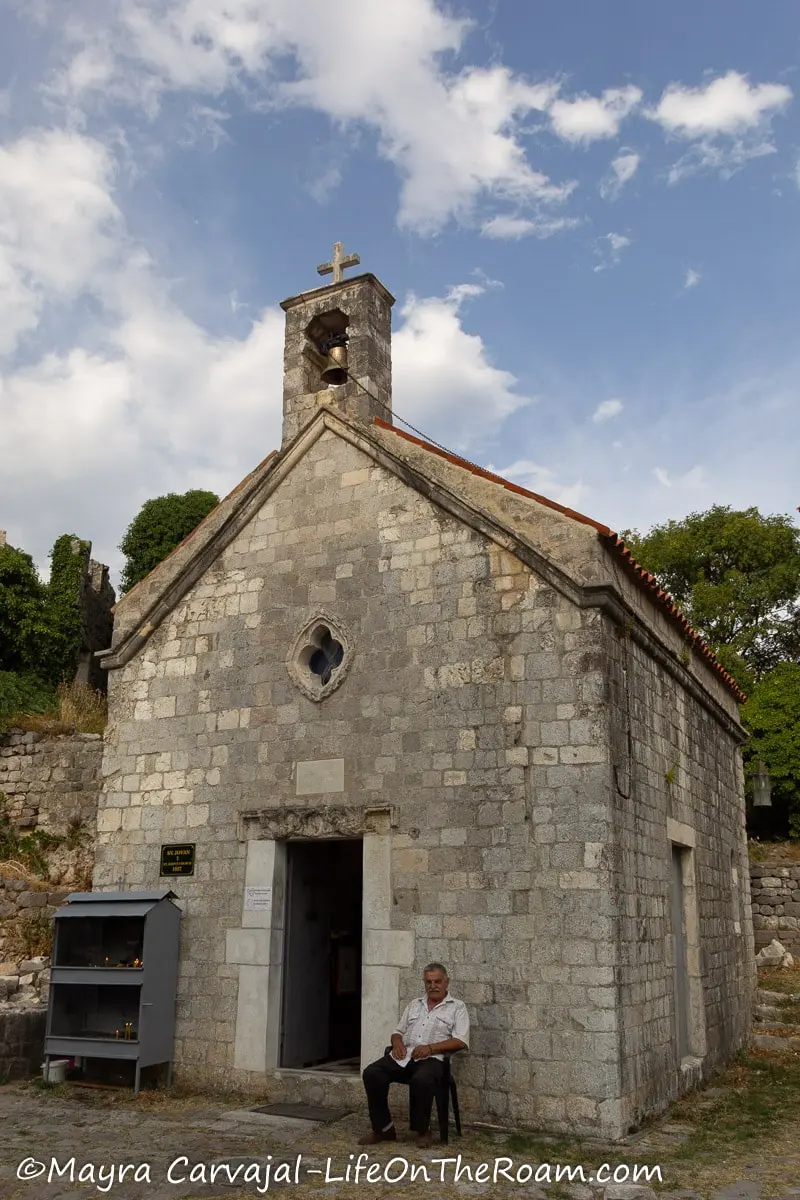
This is one of the most recent buildings, from 1927. It was reconstructed, showing only a few original details such as the dintel and the rosette.
The Palace
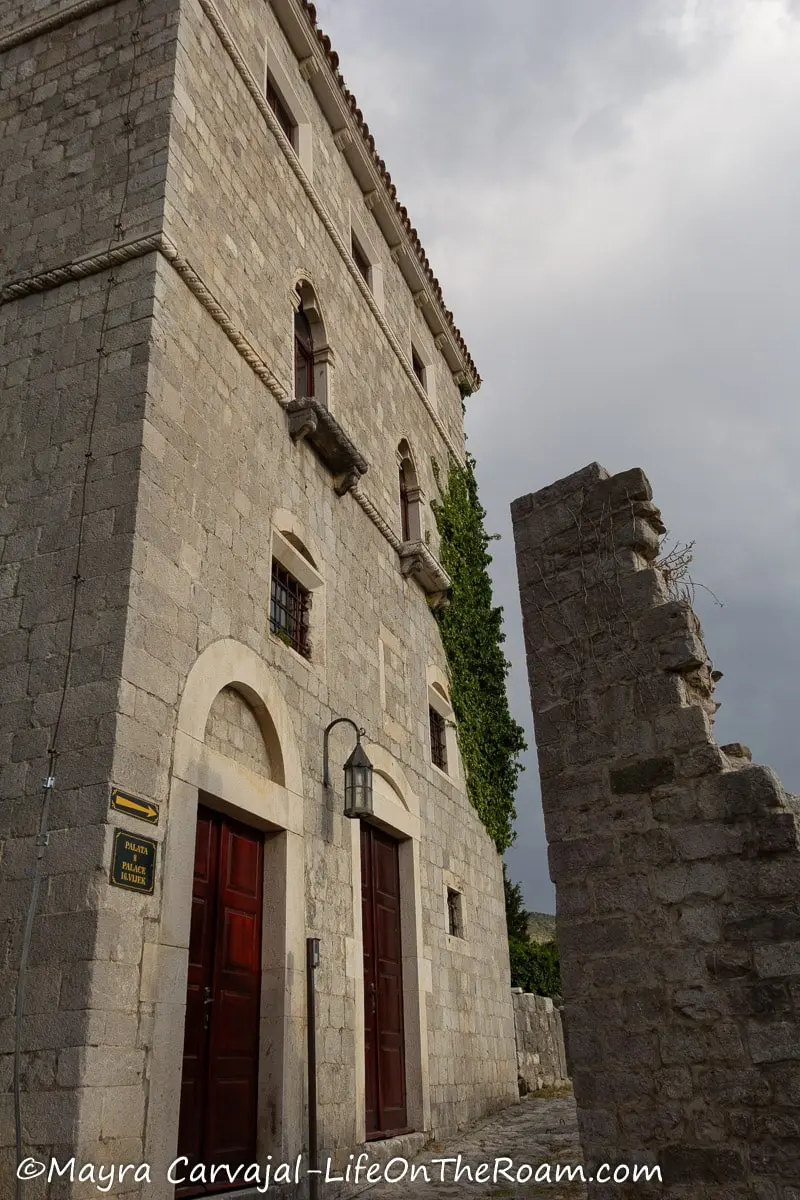
More than 30 palaces were built inside the fortress, but only one survived. After the big earthquake flattened the 16th-century building, reconstruction works allow you to see the Romanesque-Gothic style of the period.
The Church of St. Venerande
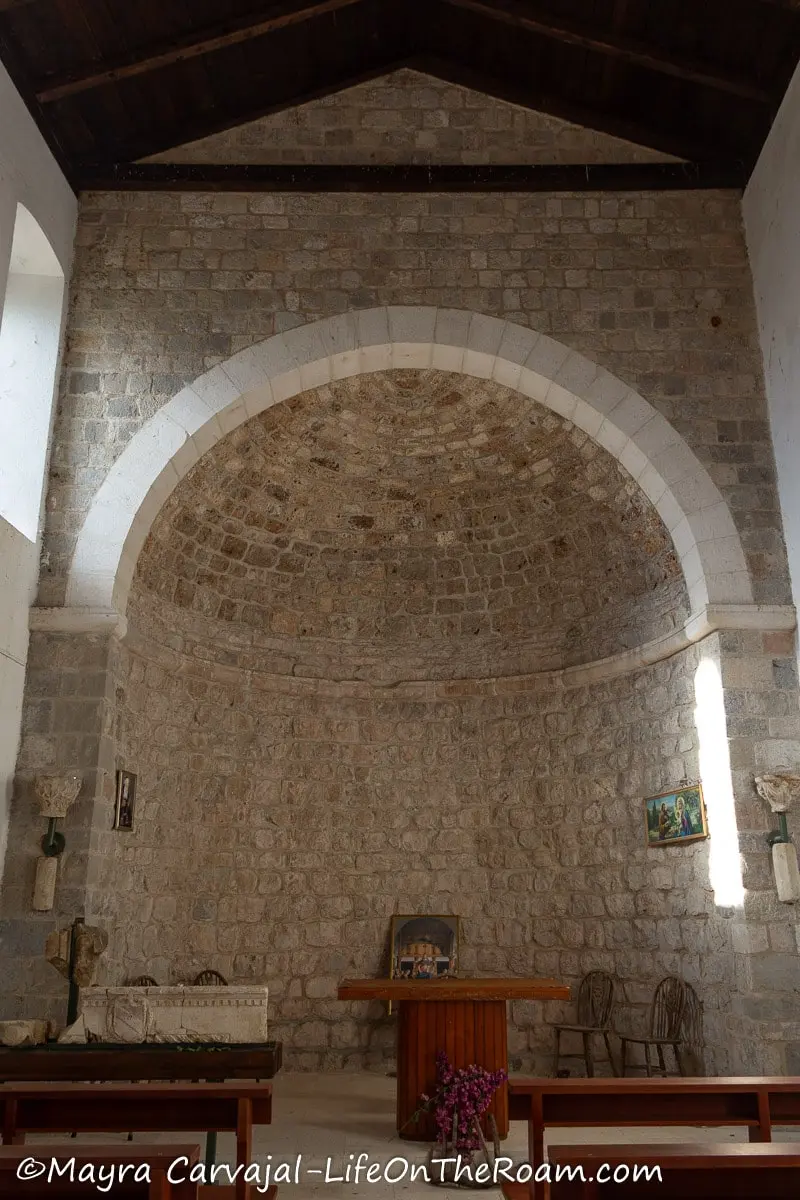
Another reconstructed Romanesque-Gothic style church, built in the late 14th century on top of an earlier construction. During the Ottoman period it was no longer a church, but a house.
The earthquake ruined whatever was left and now reconstruction work brought it back to life. Plans are to use it as an exhibit space.
The Church of St. Catherine
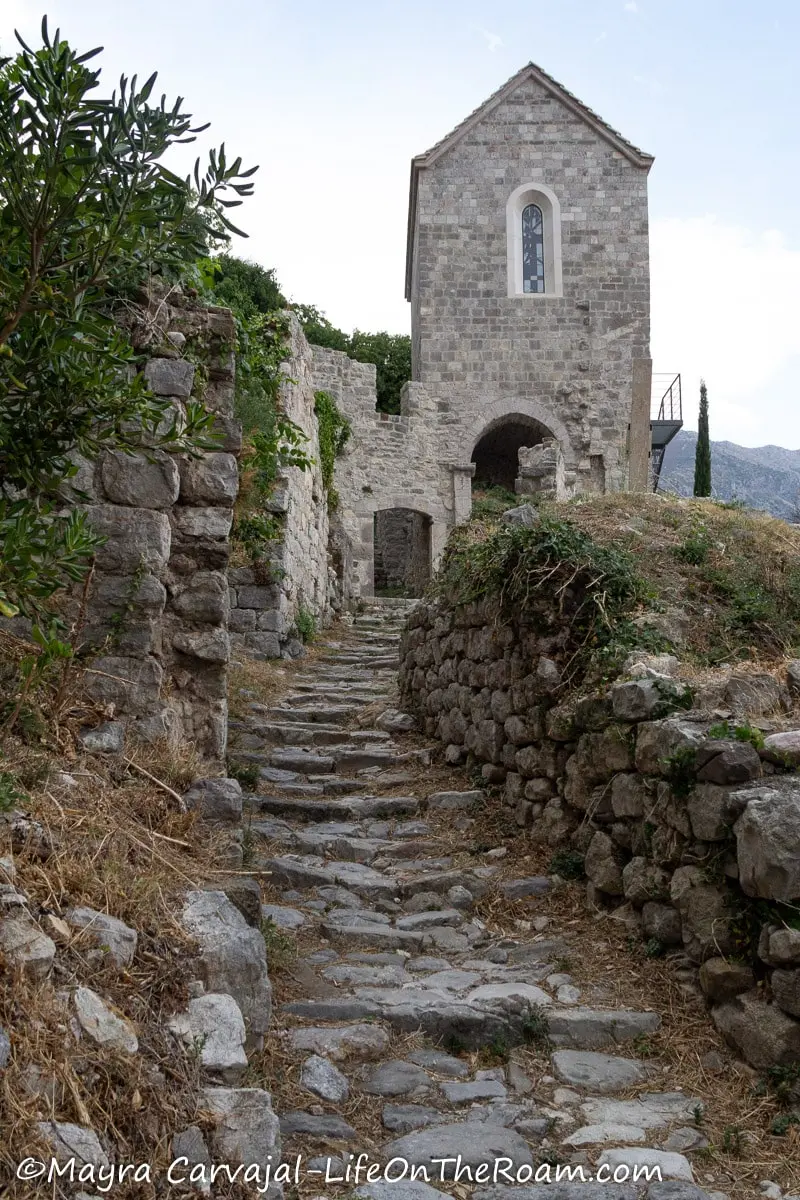
The original church was built in the 14th century and during the Ottoman period, as it happened to St. Venerande, it was used as a house. Reconstruction works pieced it together again showing some Gothic-style elements.
The Clock Tower

The Clock tower, an icon of Old Town Bar, was built in 1752 right next to the southern gate (10th-11th century). The tower underwent two restorations.
The Hamam
A Hamam is a Turkish bath, another print left by the Ottoman Empire. It was built towards the end of the 17th century and start of the 18th century. It’s now restored and functional and will be used as an exhibit space.
You’ll find another construction of the Ottoman period near the entrance of the fortress: the Omerbašić Mosque, built in the mid-17th century.
Stari Bar Fortress Entrance Fee
The entrance fee to visit the Stari Bar fortress is €5 p/p.
The Olive Tree Garden at the Omerbašić Mosque
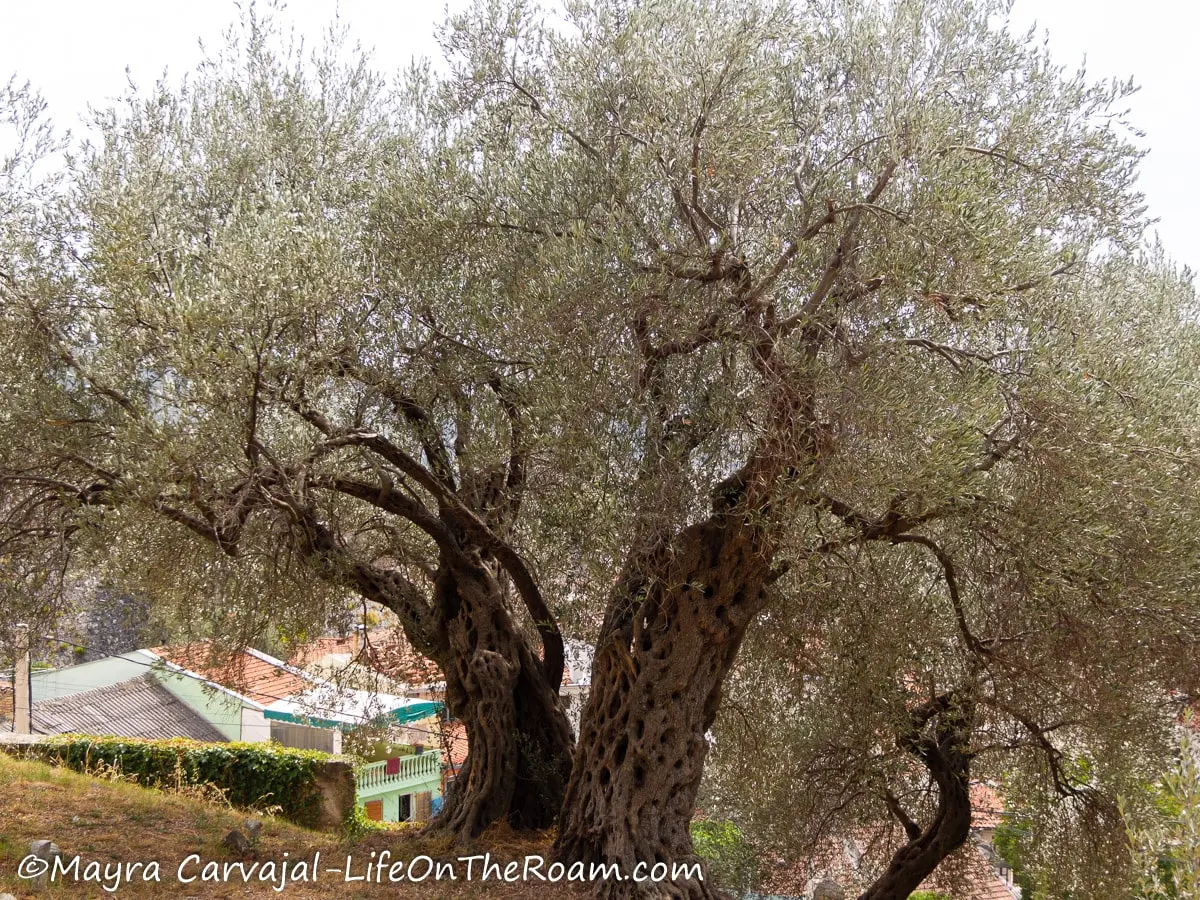
Visit the gardens of this mosque, built in 1662, and enjoy some downtime walking amongst ancient olive trees and seeing the interesting shapes of the trunks.
Across the region there were more than 100,000 at some point. There are still plenty, some of them more than 1,000 years old.
If you’re a fan of olive oil, you may want to visit Stari Bar in November to attend Maslinijada, the Olive Tree Festival. In addition to tasting olives, you can also taste cheese, wine, and other specialties while attending traditional music festivities.
Where to Stay in Old Town Bar
It’s easy to visit Stari Bar as a half day trip from the city of Bar, but if you want a more relaxing and different experience by staying in the heart of the Old Town instead of the city, here are some options:
VILLA IRMA: this apartment has a modern bathroom, a kitchenette, a dining table, a flat screen TV, and AC. Breakfast and access to the facilities at the nearby Stara Čaršija Hotel are included.
Check rates and availability at Villa Irma, with a rating of 9.6 based on more than 80 reviews.
STARA ČARŠIJA HOTEL & SPA: this 5-star hotel offers different options, all equipped with a private bathroom, AC, flat screen TV, a desk, a fridge, and breakfast included. Some rooms have a balcony. The hotel has a pool (seasonal), a sauna, a garden and terrace, and free parking.
Stay at Čaršija Hotel & Spa, with a rating of 9.4 based on more than 665 reviews
IGUANA HOUSE: less posh than the previous suggestions, but still a great option with units equipped with AC, flat screen TV, a fridge, a kettle, and a desk.
Book your stay at Iguana House, with a rating of 9.0 based on more than 135 reviews
Where to Eat in Old Town Bar

Of all the cafes and restaurants in Old Town Bar we decided to try Konoba Bedem (Taver Bedem). We loved the ambiance of the terrace and after trying their food we were not disappointed.
I was glad to find that they have tons of vegetarian options. I had the baked eggplant dish and the beer with pomegranate. Everything was delicious and their homemade olive oil is absolutely fantastic.
How to Get to Old Town Bar
It’s really easy to get to Old Town Bar from the city of Bar, as it’s only four kilometres away.
You can take a 10-minute cab ride or one of the buses that go to Stari Bar (the sign says ST. BAR).
If you feel like exercising a little bit, walking from Bar to the Old Town takes about one hour and change, depending where you’re staying in Bar.
The revival of the Old Town of Bar is still a work in progress, with the promise of uncovering many more gems. Do you love to visit places that transport you back in time as much as I do? Check out my post about Cetinje, the Old Capital of Montenegro.
YOU MAY ALSO WANT TO READ
BOOKING FLIGHTS AND ACCOMMODATIONS
Book your flight without losing your shirt
We check Momondo to find great deals to book our flights. Also, check Great Escape: it combines the listings from Expedia, Kiwi, Kayak, (and Skyscanner on the premium service) to find the best airfares.
To find a place to stay for less
Booking.com: you’ll find any type of property you can think of in their massive listing, with one of the most comprehensive filters. We’ve found great deals on boutique hotels, apartments, and private rooms in hostels.
Hotwire: the first site I check when we plan to stay at a hotel for a few nights. You can save anything from 20% to 60%. Use the search filter to find what you want and you’ll end up with three listings that match your criteria. You’ll know which one you’ll get after you book. If you can handle a little bit of uncertainty you can score big savings.
House Sitting: you take care of people’s pets and house for free while staying for free. It’s the closest thing to experiencing a place “like a local”. But it comes with responsibilities… Are you an animal lover? It may become your new way to travel.
To get travel insurance
SafetyWing: travel medical insurance that gives us peace of mind knowing that we’re covered in case of emergency. It’s convenient, affordable, and suitable for digital nomads who spend a long time outside their home country.
Check the full list of travel resources on my Resource Page for more options and savings
